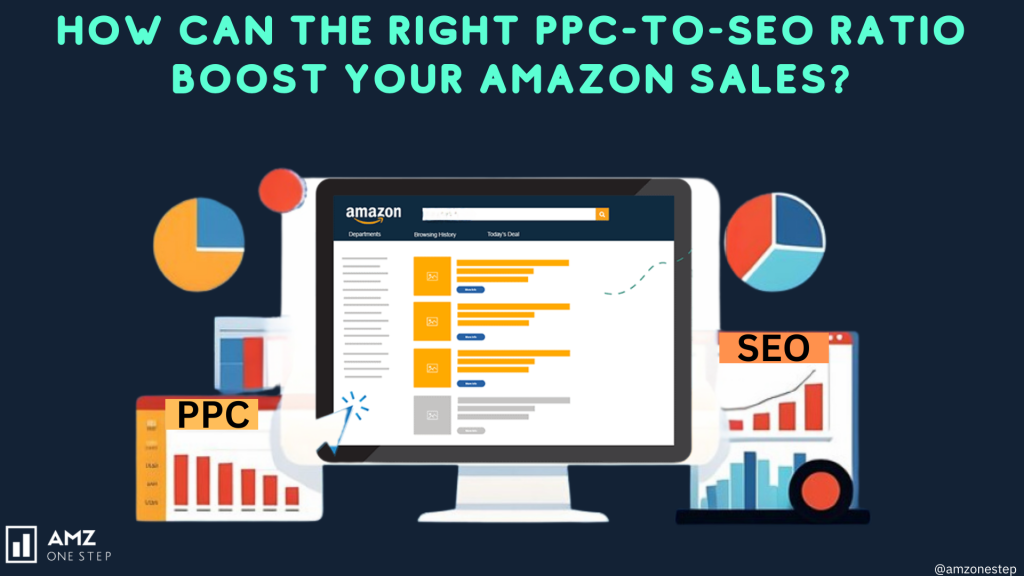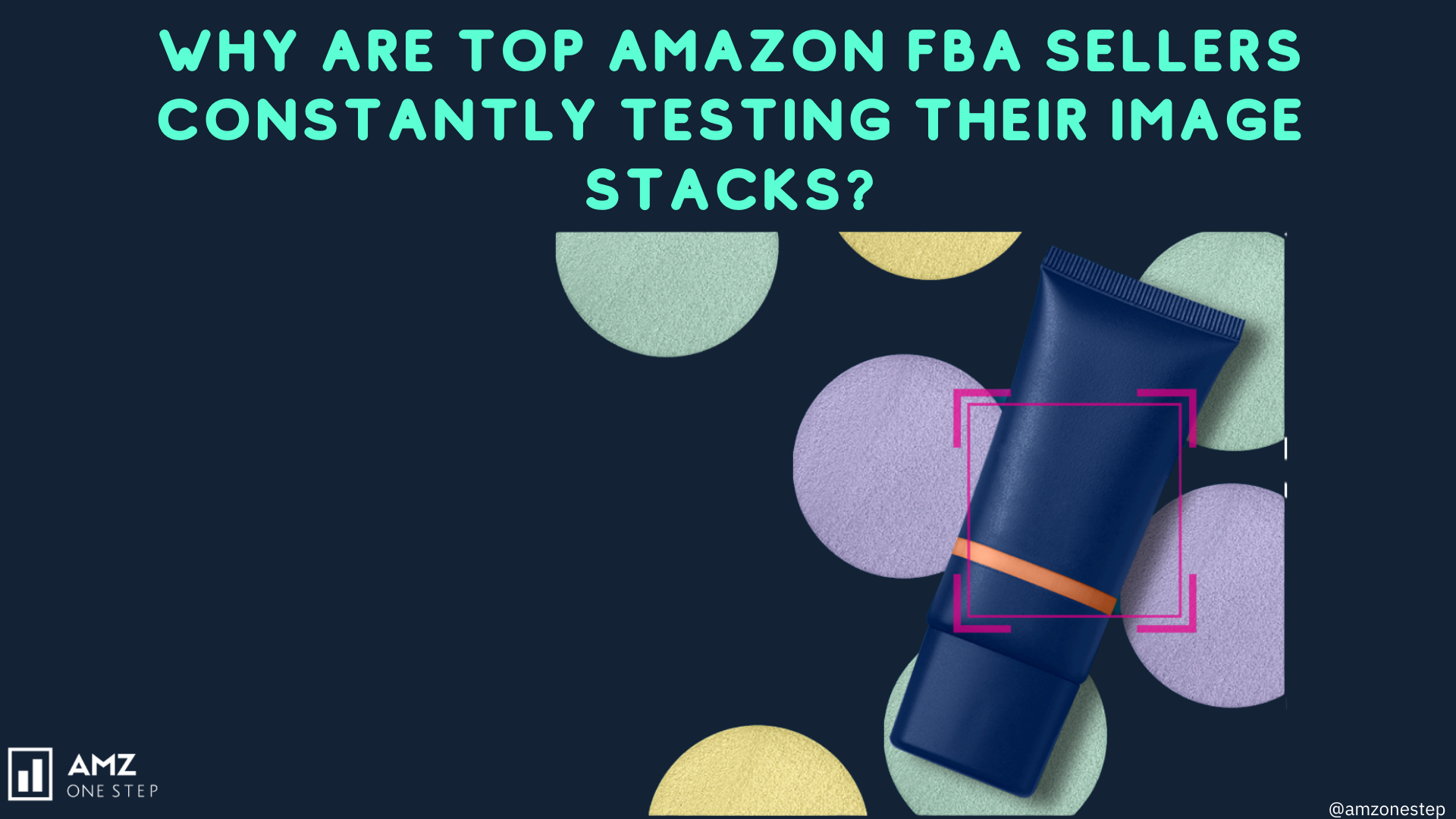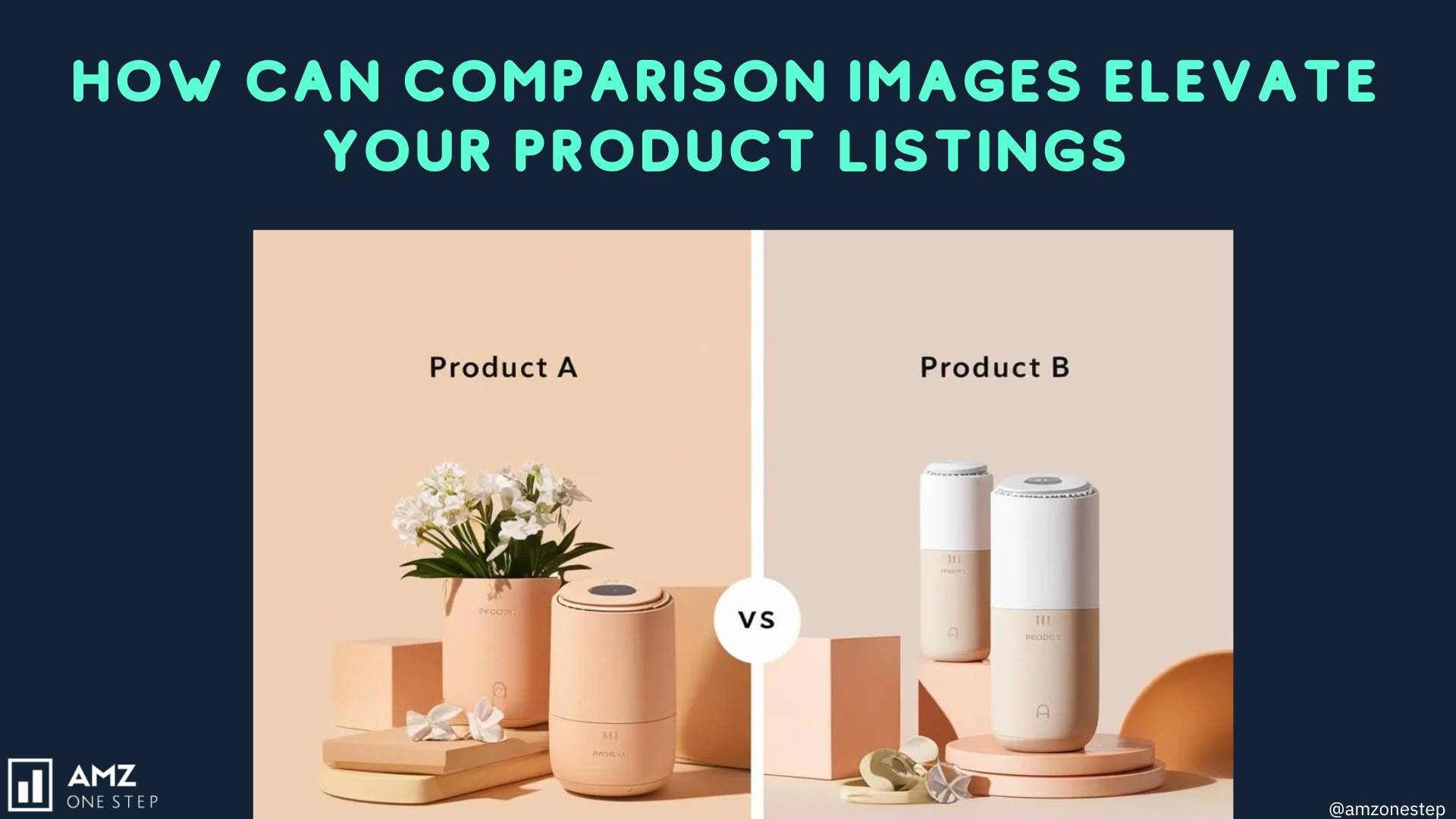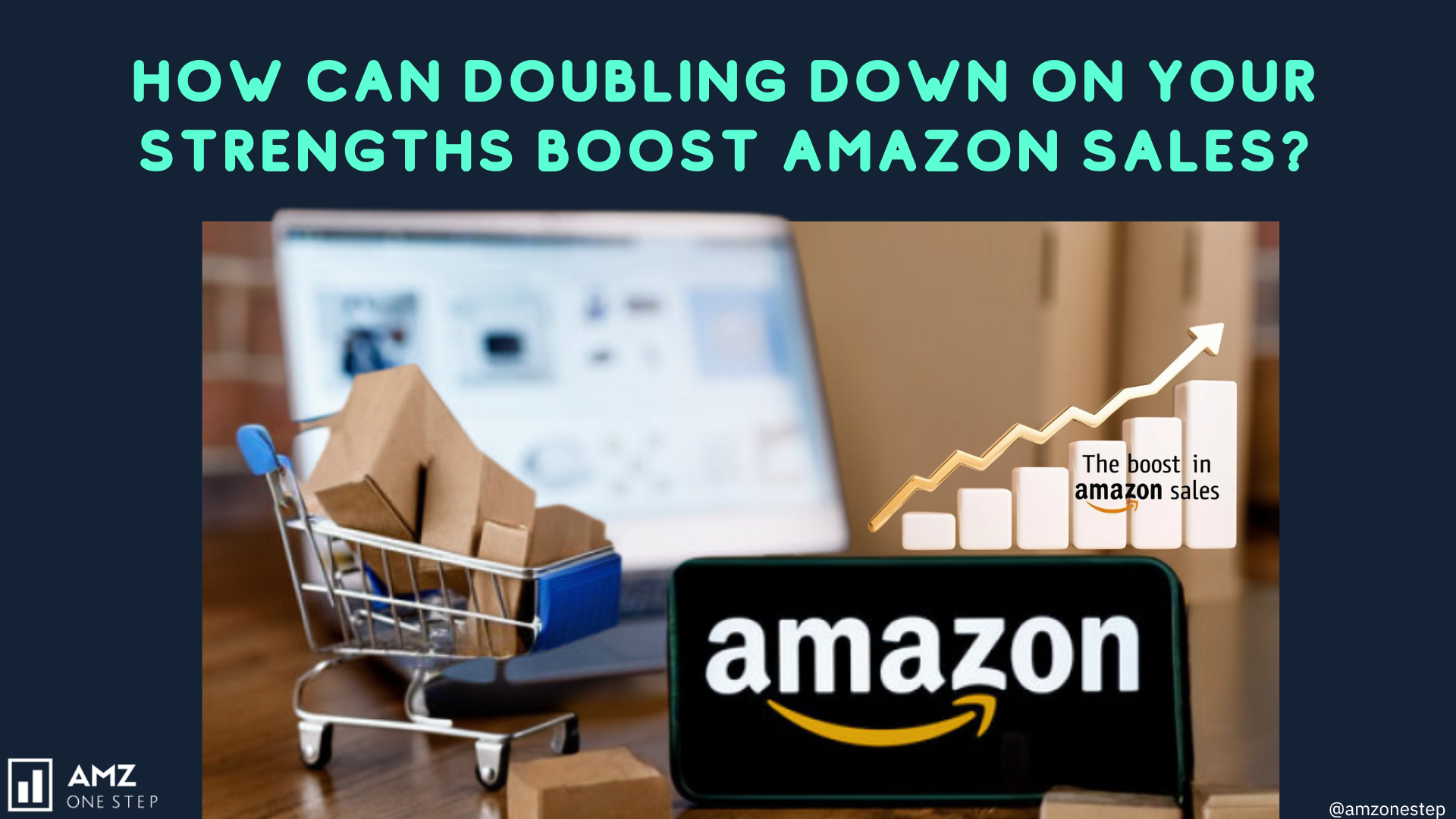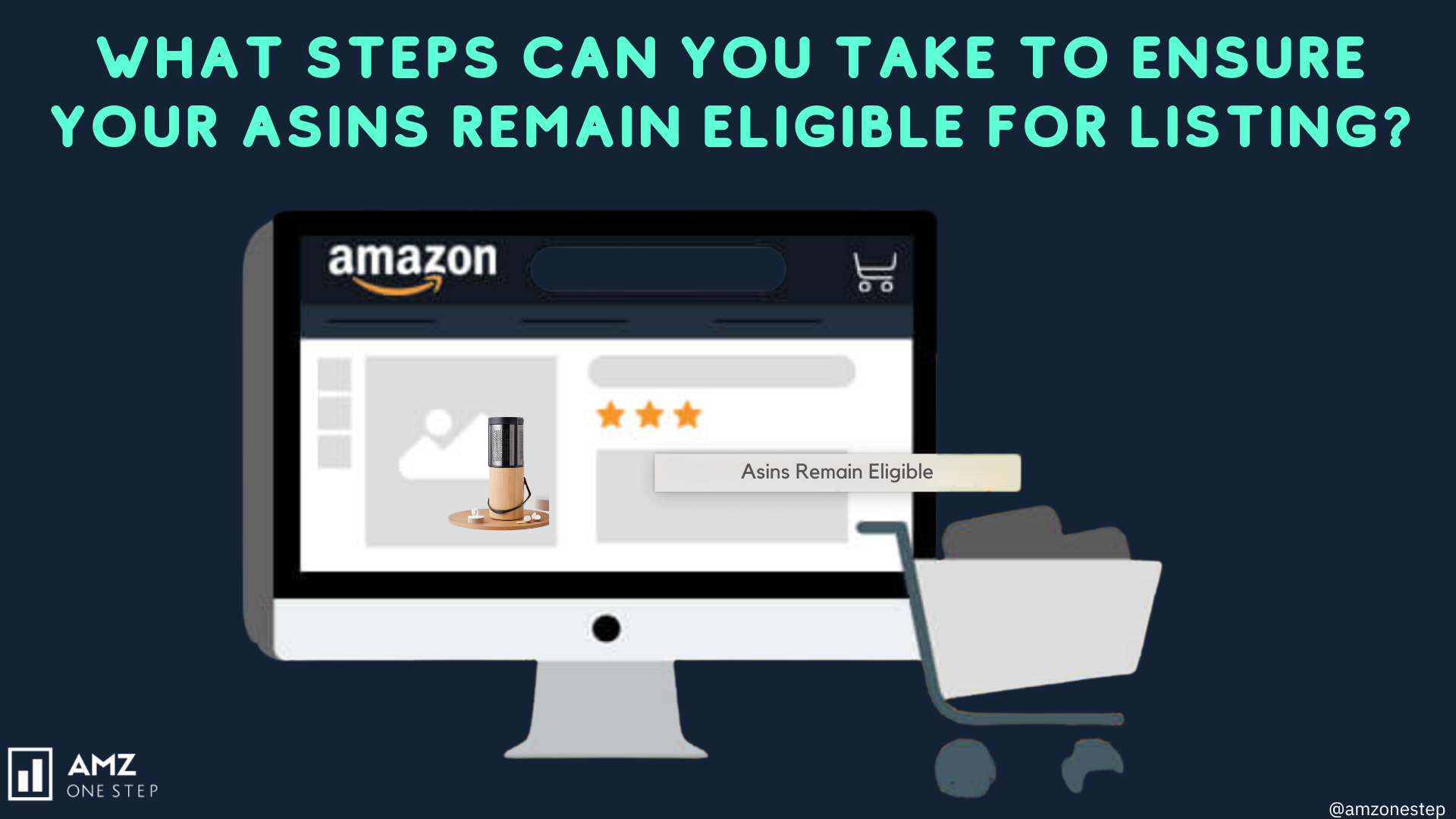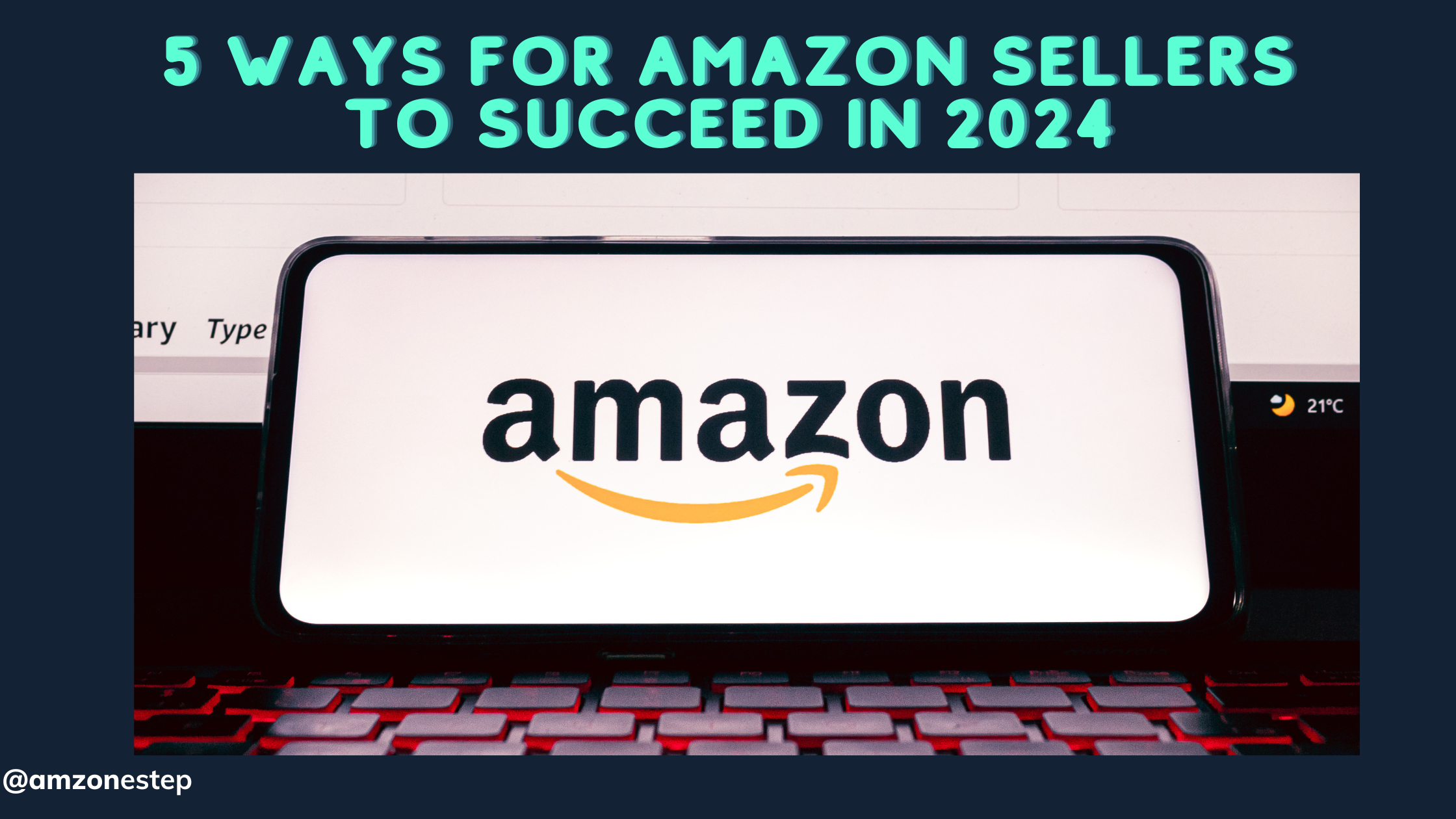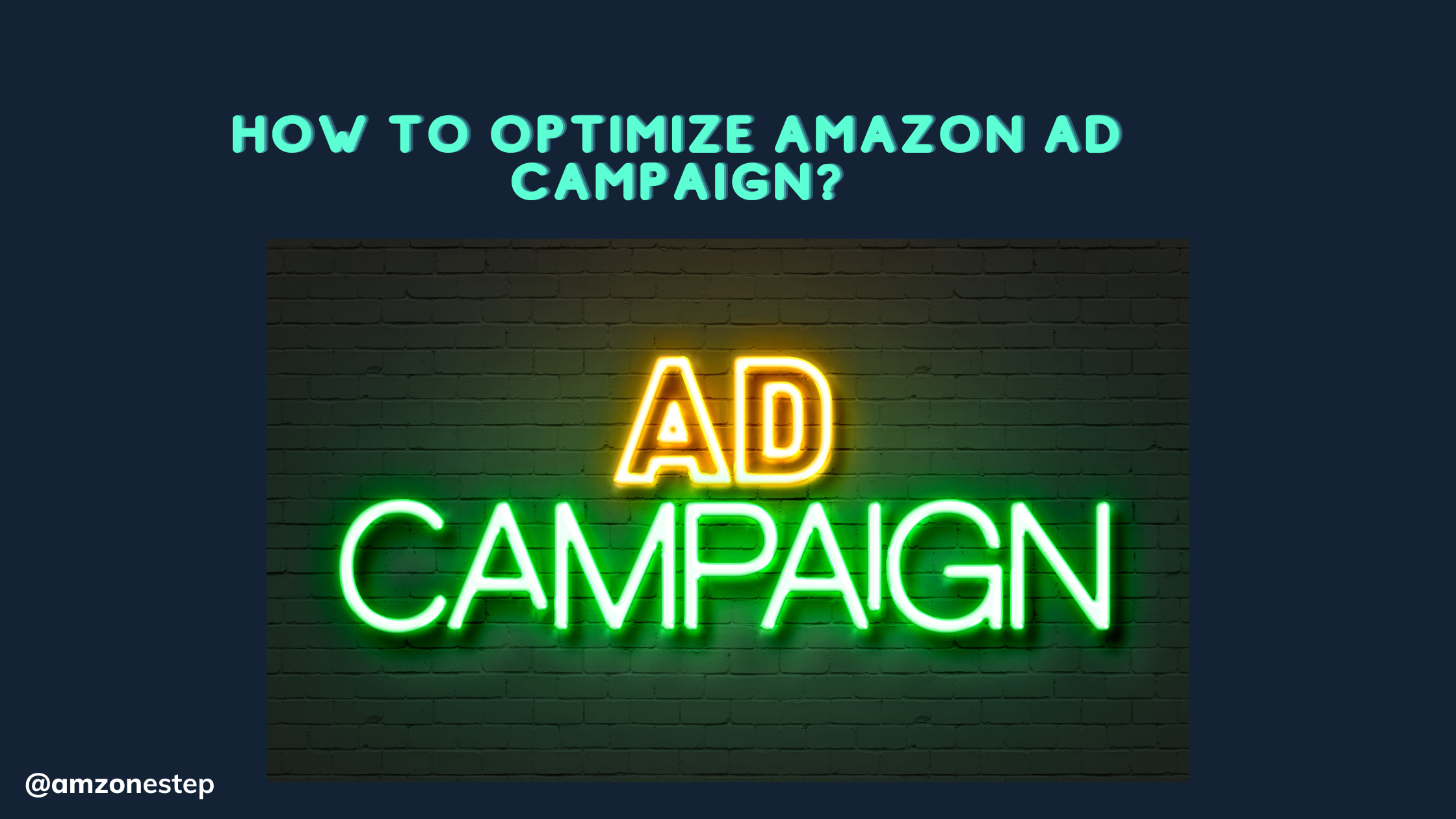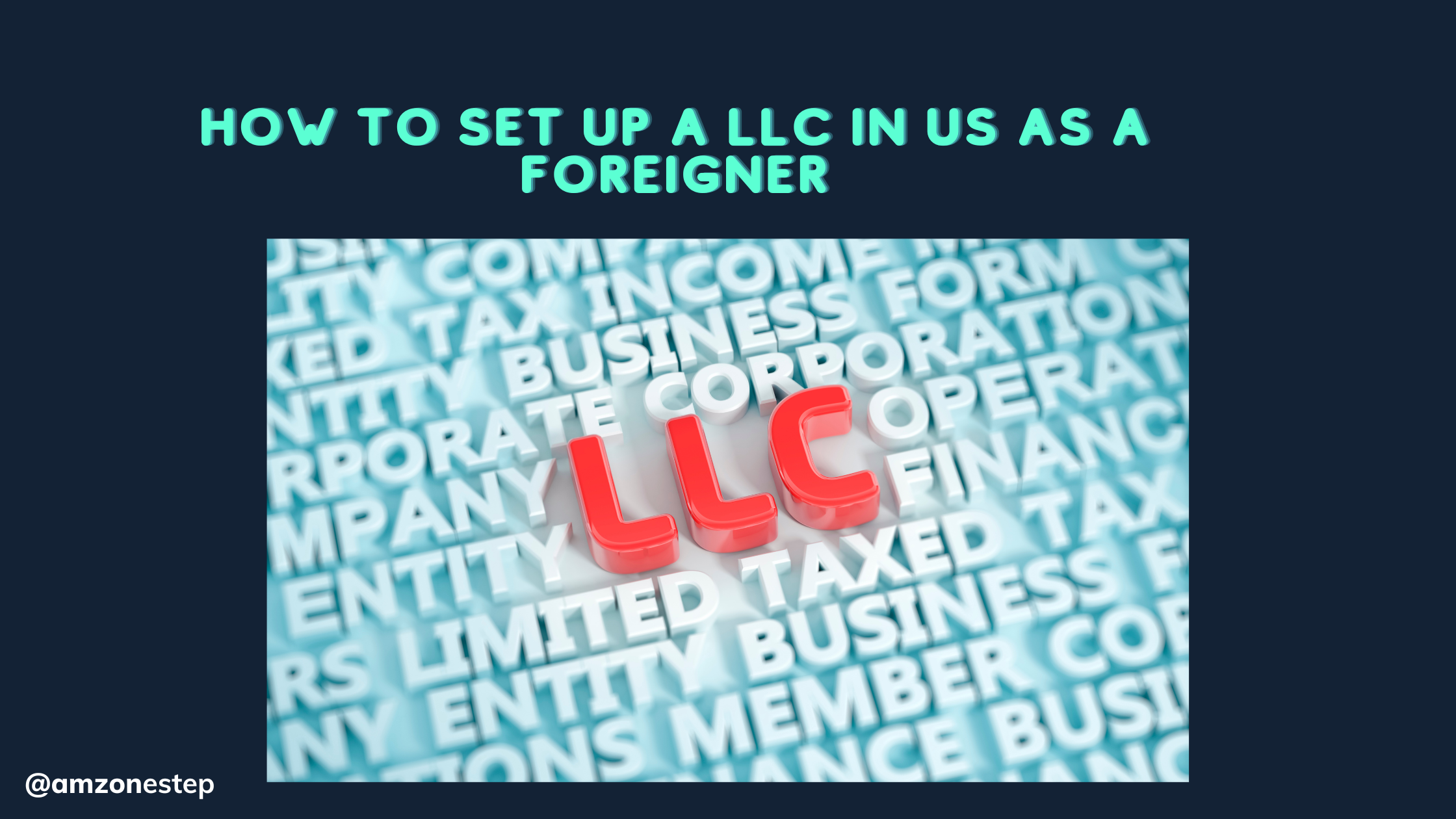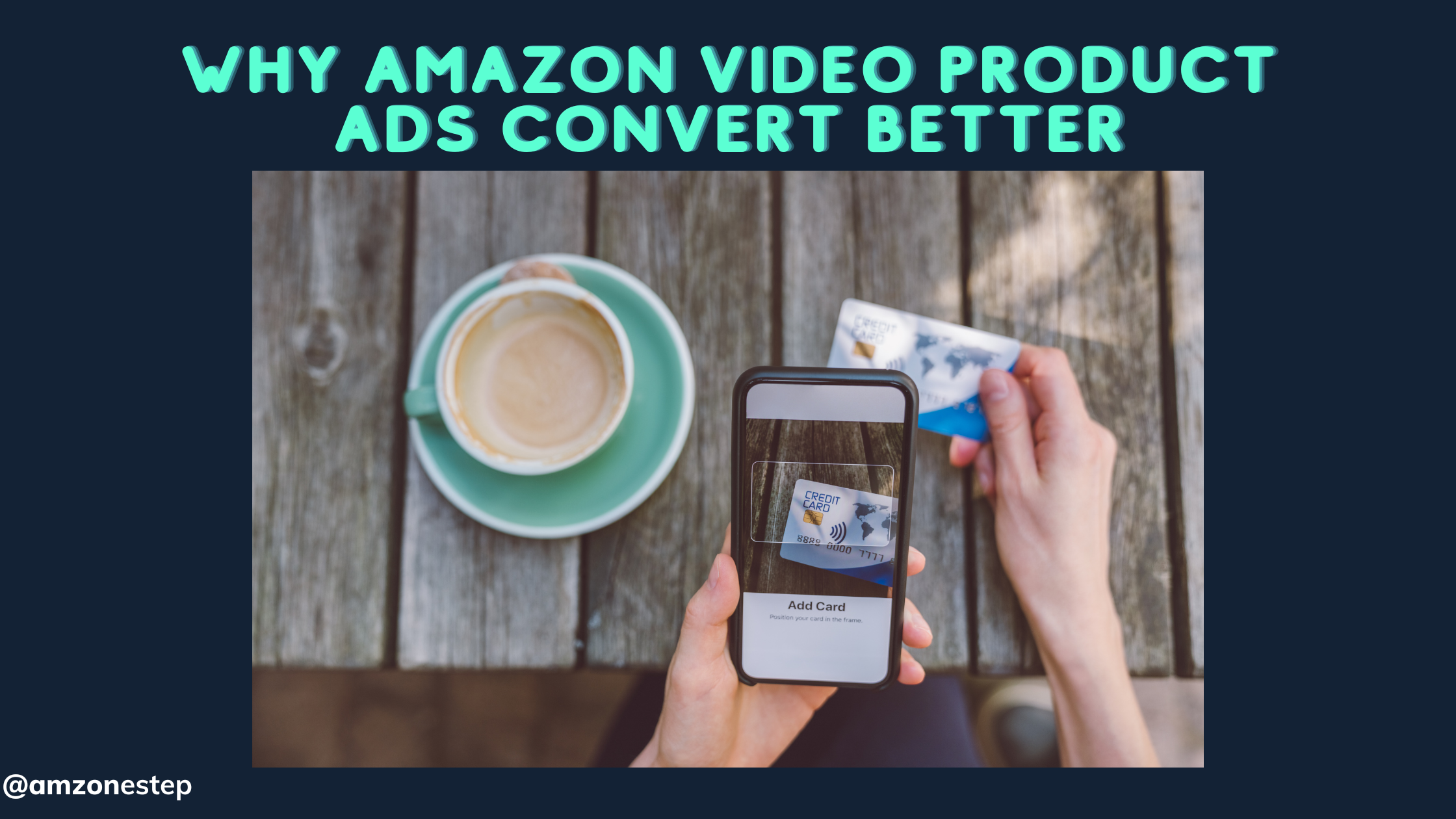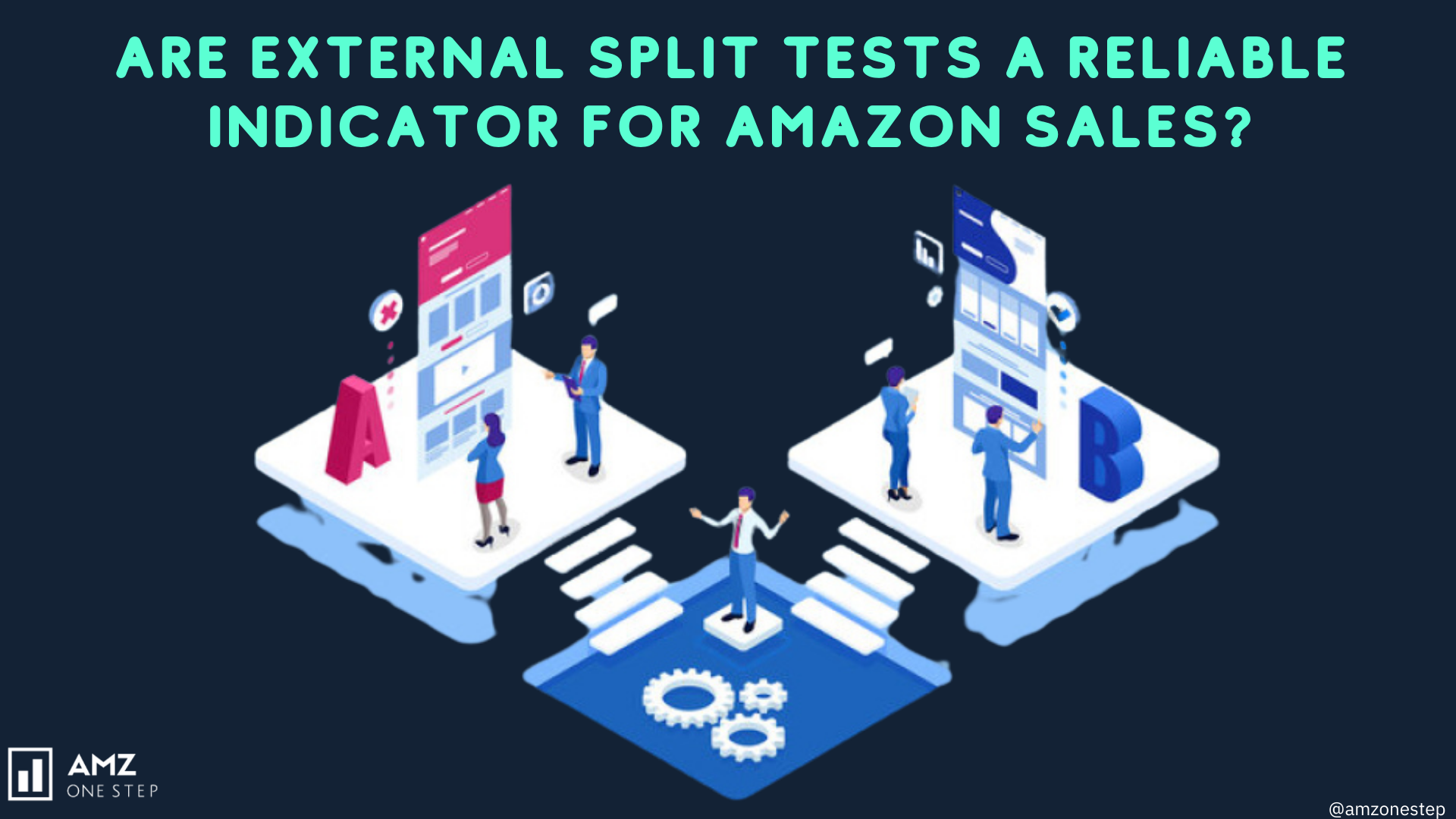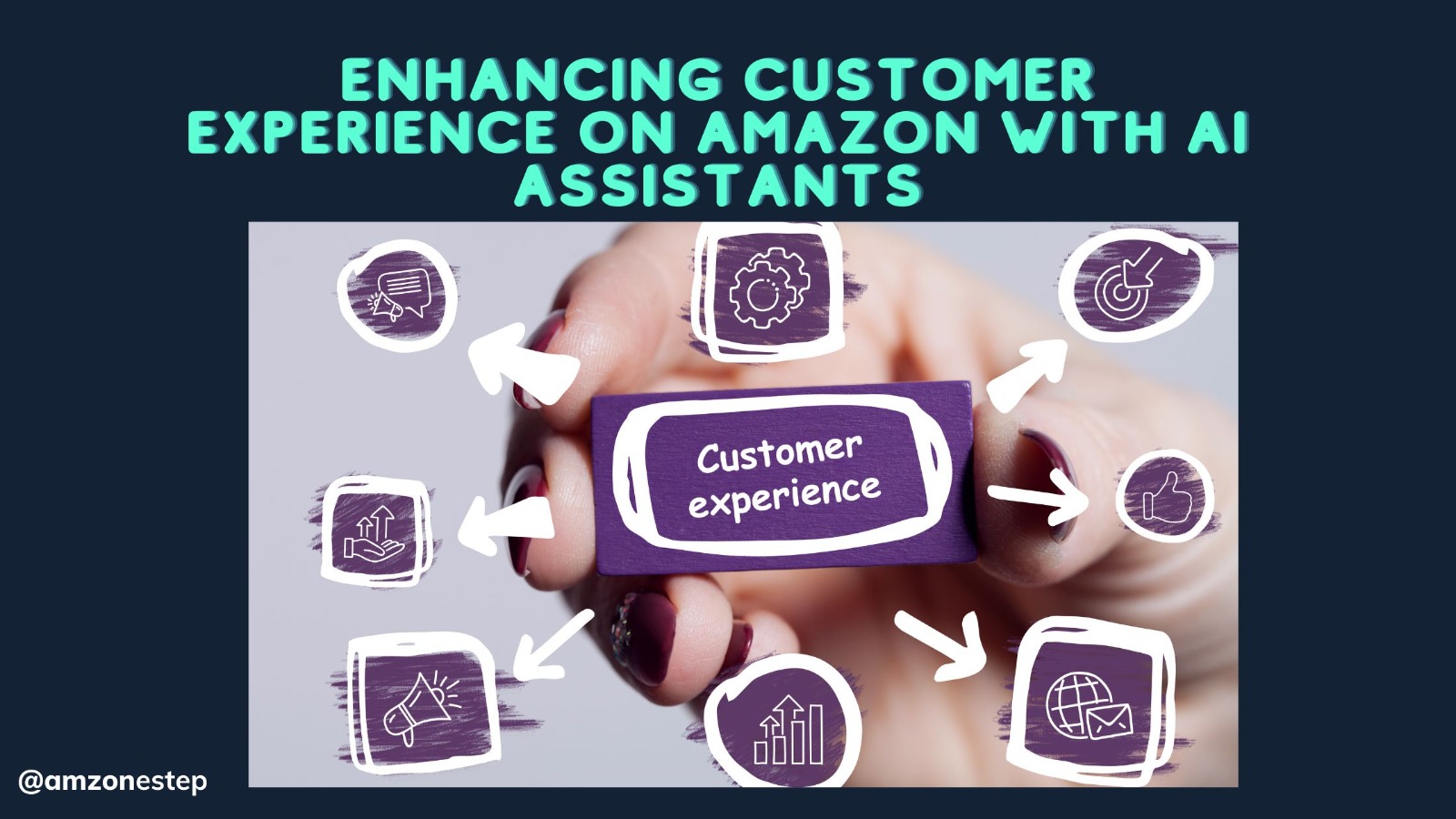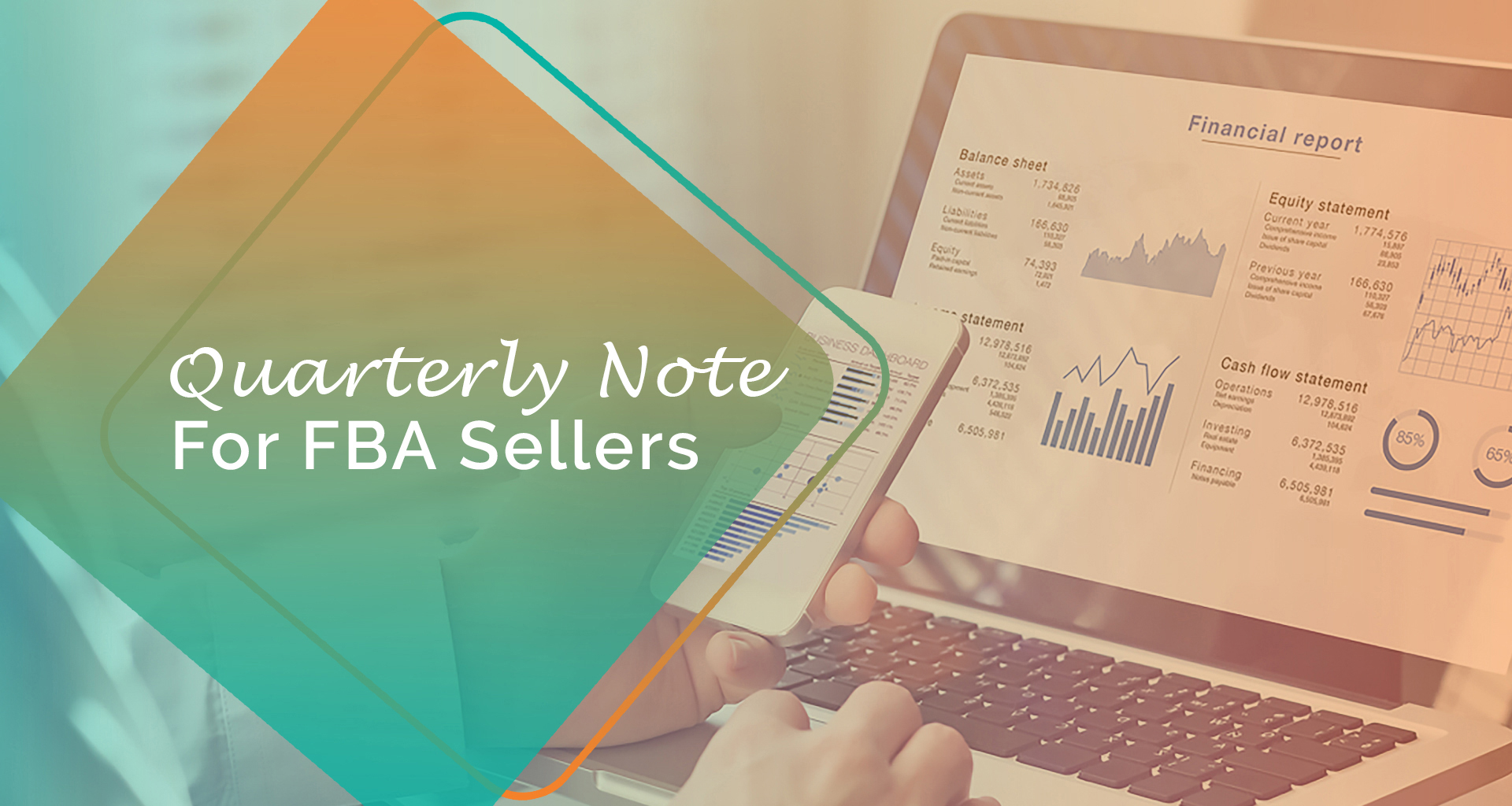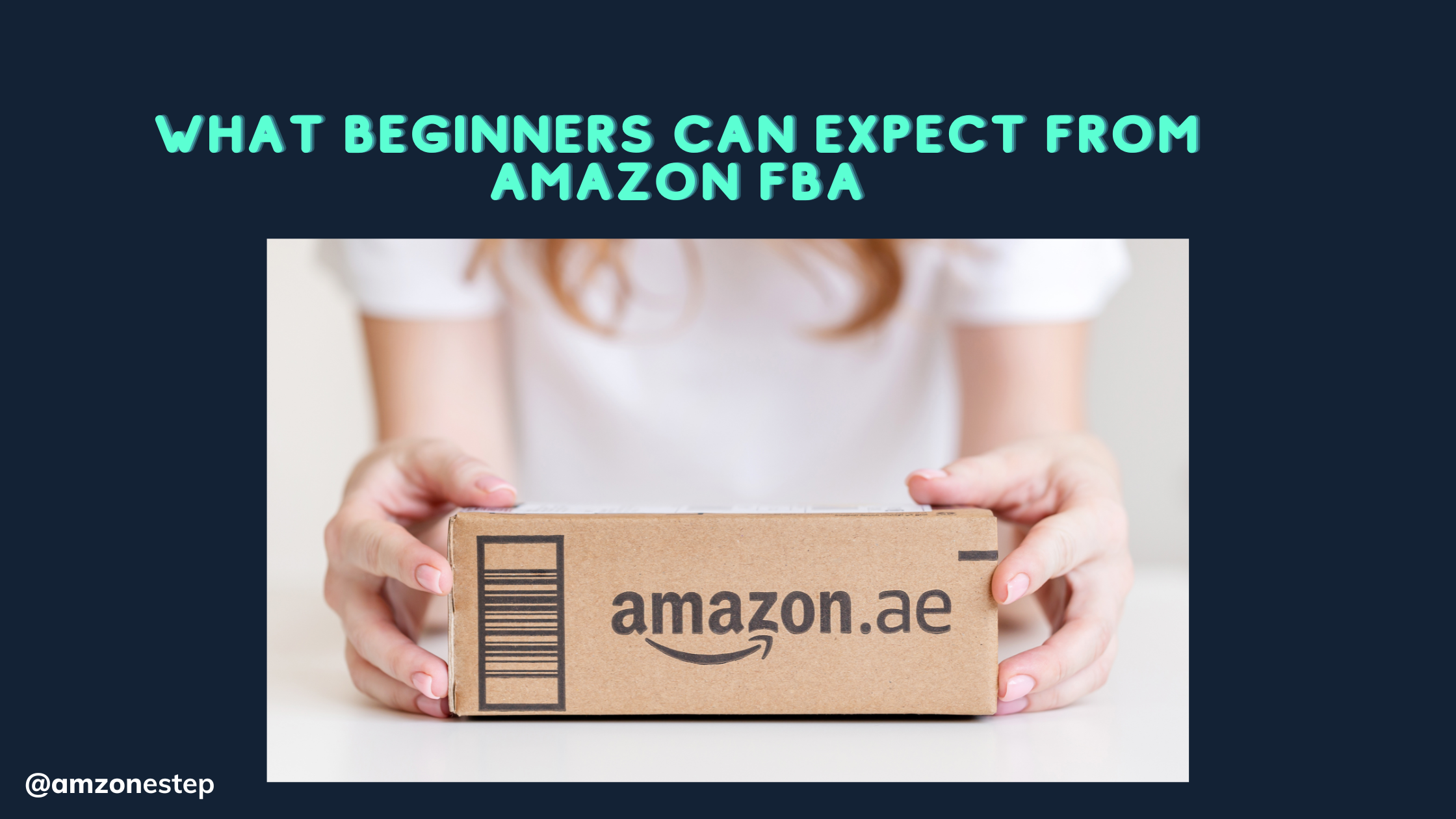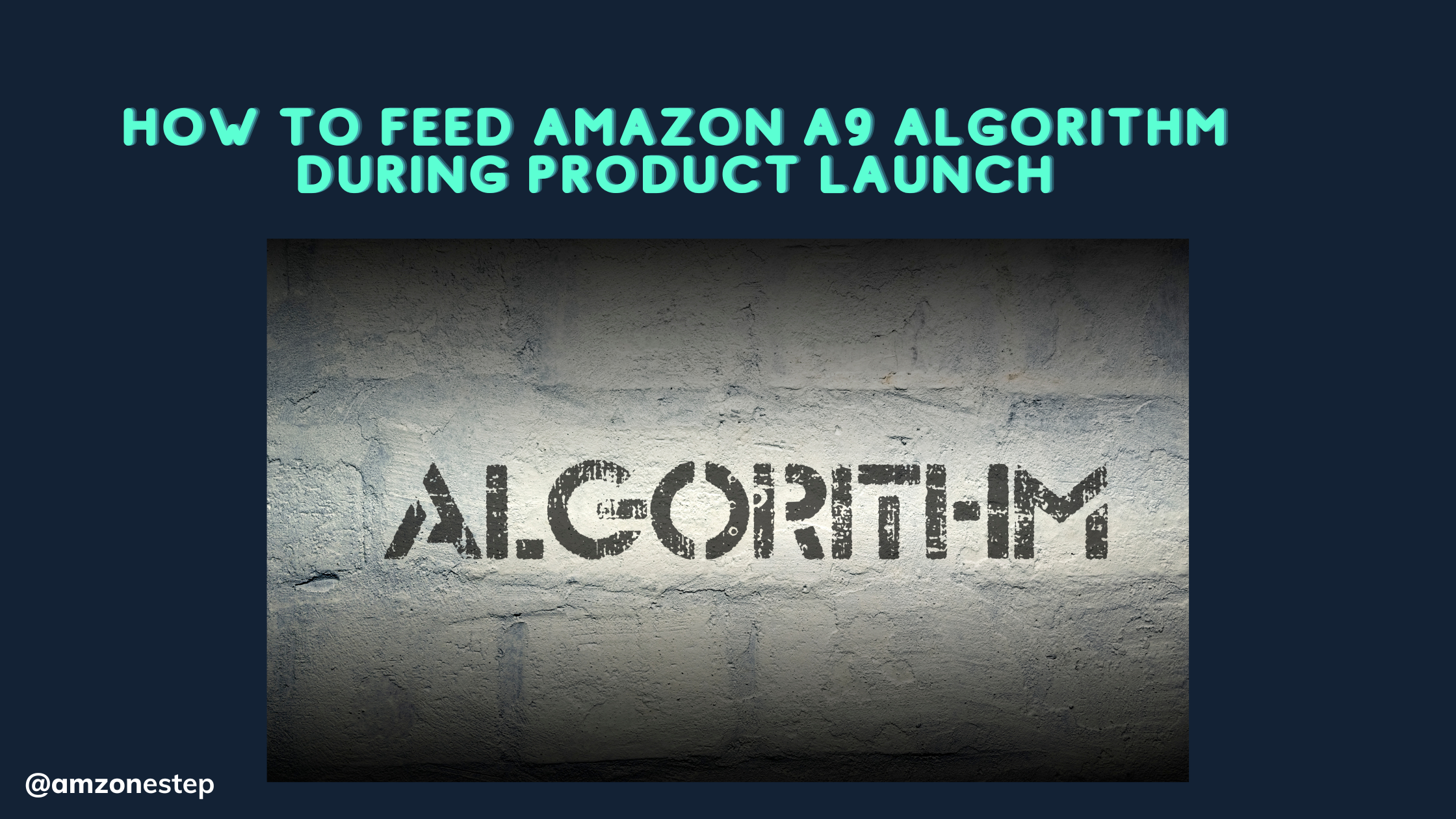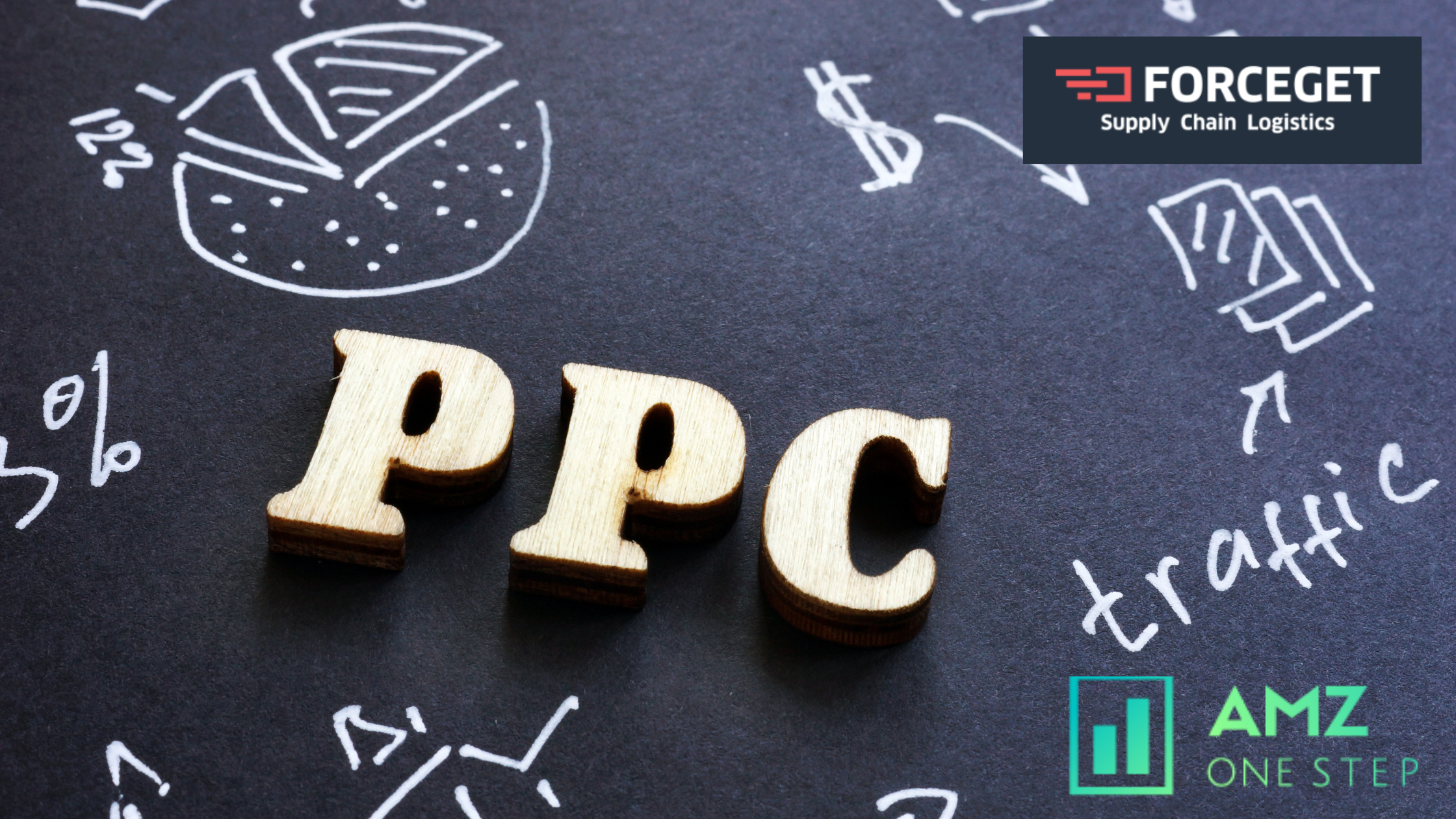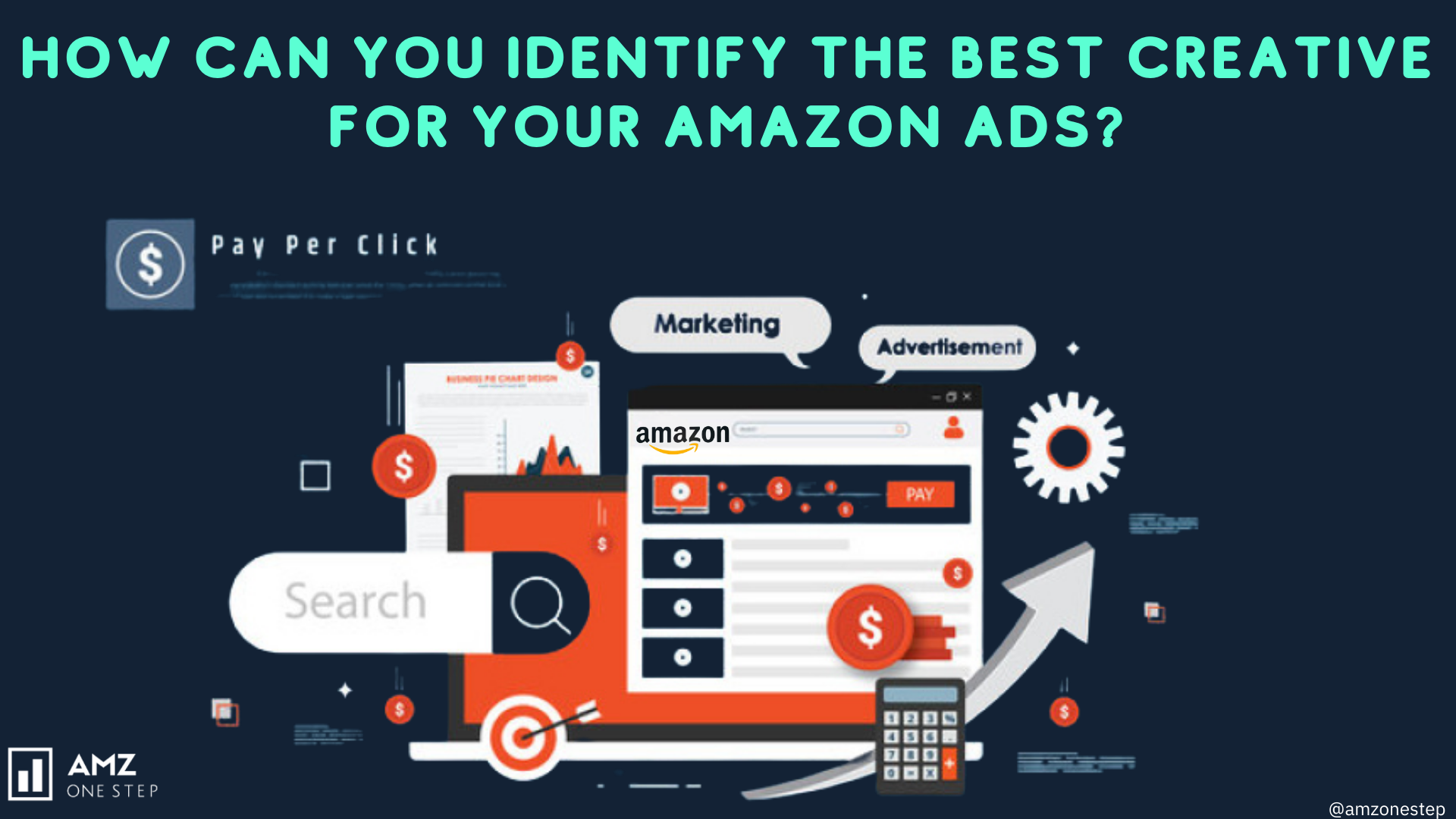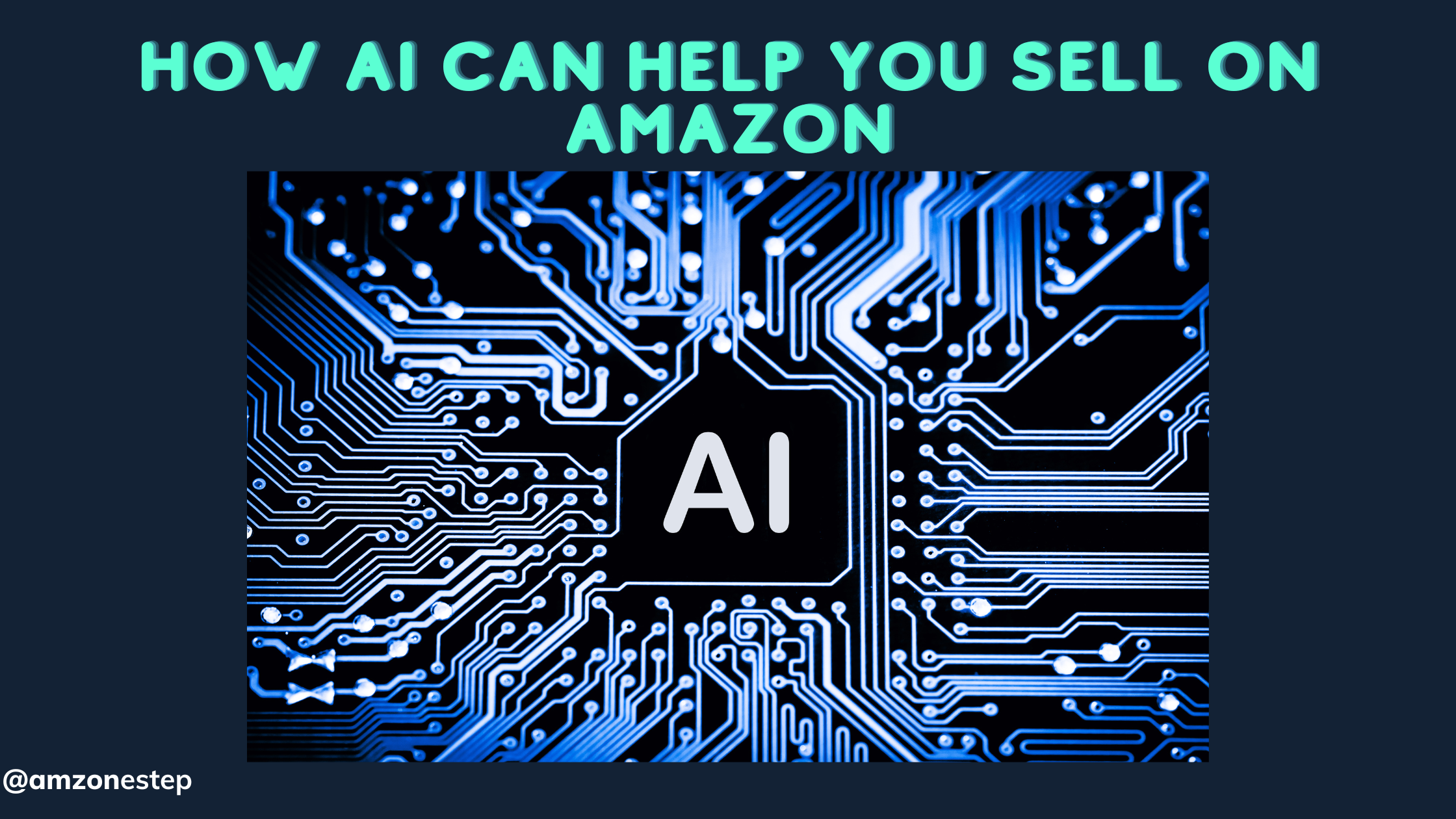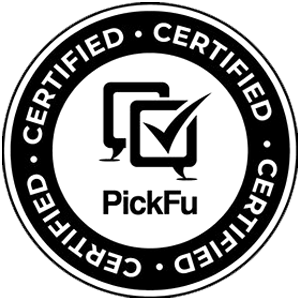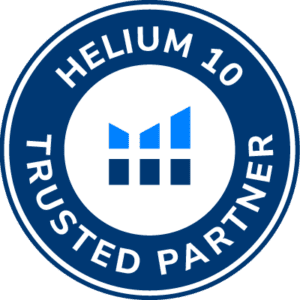Did you know that the perfect balance between PPC and SEO can revolutionize your Amazon sales strategy? A high-performing PPC campaign driving immediate traffic while your well-optimized SEO ensures lasting visibility.
Together, they’re a powerhouse duo that can elevate your product rankings, attract more customers, and maximize ROI.
Whether you’re an established Amazon FBA seller or a newcomer, understanding the right PPC-to-SEO ratio is your secret weapon to dominating search results and converting clicks into sales. In this guide, we’ll explore how syncing these two essential strategies can boost your Amazon success like never before.
Explore More: 3 Ways to Measure the Performance of your Amazon PPC Ads
Table of Contents
Immediate Visibility Through PPC Campaigns
PPC campaigns are especially helpful when a new product is introduced to Amazon since it can target the desired population instantly as opposed to waiting for it to be found in the sea of constrained traffic that may not purchase anyway due to its limited feedback and reviews.
New products for instance face a lot of challenges, initially have low ranking value when it comes to search, and hence lots of competition from well-established brands. The PPC ad places the product strategically where targeted customers are in the search results and gets to them on time.
- For instance, an Amazon FBA seller who is selling a fitness tracker will post specific keywords such as ‘cheap fitness tracker’ under PPC ads. This makes the product to be among the first to be seen once the search is done hence attracts the buyers.
The idea of Long Term Sustainability with SEO
SEO provides an effective tool for staying relevant on the site for a long time after PPC campaigns have finally exhausted their potential.
Learning from the defunct free-for-all ad war, most Amazon FBA sellers have adopted the use of keywords such as in product title, bullets, descriptions, and relevant back-end searches to enhance organic ranking.
- For instance, an Amazon FBA seller with a product “Multi-functional vegetable slicer”. So, if it is associated with such text as ‘time-saving kitchen tools’ or ‘the best vegetable slicer for salads’, it will be continuously presented at the top of articles with those words.
In the long run this constant exposure means constant flow of traffic and sales without having to spend more on adverts.
The need for SEO increases even more by 2025, considering the increasing ad expenses around that time. Because of the impact of inflation in PPC budgets, those Amazon FBA sellers who do not utilize SEO subject themselves to essentially unmanageable advertising costs.
Additionally, the targeted search results provided by AWS in the form of the A9 algorithm filters promote well-optimized listings more and more and thereby make SEO an essential part of an Amazon FBA seller’s success plan.
Towards Better ACoS with Synergy Amazon FBA
ACoS is the most important yardstick regarding the effectiveness of PPC campaigns. For those who intend to combine PPC with SEO, the ACoS of their products will be cut down in the course of the business, which will help in increasing the overall revenue return on investment.
Enhanced product that helps speed up the pay per click advertisements so that the clicks through rates as well as the conversion rates are higher yet the number of unproductive or unnecessary advertisements is lower.
- For instance, suppose the Amazon FBA seller is interested in bidding on the PPC ad section to appear in searches next to the term ‘organic baby shampoo’. If the keyword is used both to create a category listing and to optimize that listing, it is a smooth transition for the customers.
The next shoppers clicking on the ad will see a listing that contains ideal keywords and branding descriptions, or benefits including ‘gentle on sensitive skin’ or ‘no harsh chemicals’. This alignment enhances the probability of conversions; this makes each of the ads clicked to be more valuable.
By 2025, competition shall also increase, and the costs of ads shall be even higher, meaning that controlling ACoS will be twice as important.
Brand Credibility Through Review
Reviews are the basis for amazon’s success and PPC supports the creation of these reviews especially during the start of a product.
Sites having healthy reviews not only improve visibility but also tend to draw more organic traffic as well as conversions. Always, using PPC with SEO means that the reviews can support both, paid and organic results.
- For example, the Amazon FBA seller who released noise-canceling headphones will leverage PPC to obtain 50 first sets of headphones. Some of these sales can be used to gather reviews which make the listing more trustworthy and more conspicuous.
It means that Additional keywords such as ” the best noise-canceling headphones” can then be part of the SEO strategy to keep the product competitive in organic search results.
And as the trend of consumers turning to reviews to guide them in their purchase decisions intensify in 2025, Amazon FBA Amazon FBA sellers need to accrue a good review profile. Consumers even sort the product list results with a specific attribute of the product such as high rating and number of reviews.
Sales through PPC give the much needed early push to meet such criteria while search engine optimization keeps the product in front of the buyer.
Identifying High-Performing Keywords
Through PPC campaigns, brands get useful insights on timely customer perceptions as well as popularity of certain Amazon keywords. Thanks to such analytics, the Amazon FBA sellers themselves can see which keywords have the best CTR and, therefore, the greatest conversion rates.
Such insights generate a loop by which Amazon FBA Amazon FBA Amazon FBA sellers are able to enhance existing SEO techniques with improved keywords that are incorporated within their product offers.
- For example, an Amazon FBA seller targeting vegeans using PPC and selling “vegan protein powder” may have stumbled upon a fact that the keyword like “plant-based protein for sportsmen” brings great conversion.
It can be used in the product title, bullet points, and in the description where the title was included to rank organically. This makes the listing to be perceived by more potential buyers who are in the search for the same products.
Data viewership as a critical success factor to Amazon’s Amazon FBA sellers in 2025. The ability to receive the keyword performance data of PPC campaigns also helps the Amazon FBA sellers make a smart choice for the TOP placement of the listings.
Those Amazon FBA sellers who take advantage of this information will have a better stand as compared to the Amazon FBA sellers who will try to guess.
Constructing Seasonal and Trend-Based Sales
In my conception, it is important to maximize revenues during consumption high seasons or when trends dictate so through both Amazon PPC and Amazon SEO.
Since PPC brings campaigns to the target audience’s view immediately, they are especially effective at higher traffic periods during trend increases, whereas SEO guarantees constant traffic periods.
- For instance, an Amazon FBA seller of holiday gift boxes can use PPC advertising and post the ad each in the search engine under keywords such as Christmas gifts during the months of November and December separately.
These ads generate traffic and sales in the shortest time possible so that the Amazon FBA seller can make the best out of the holiday season. At the same time, the Amazon FBA seller can fine tune the keywords and phrases which can be something more neutral like “gift boxes” for customers who may need them at any time of the year.
By 2025, growth in demand and relevance of seasonal purchases and purchase driven by trends, requires Amazon FBA sellers to adjust to its corresponding fluctuating demands.
PPC enables the Amazon FBA sellers to respond to new trends or high seasons as compared to SEO that focuses on the foundation of long-term visibility. These two tactical strategies help Amazon FBA sellers to create constant sales regardless of the nature of the market.
Competing in Saturated Niches
Saturated niches on Amazon means that when a niche is very competitive Amazon FBA sellers end up incurring high ad costs and it becomes hard to make a difference.
This makes the complete reliance on PPC unsustainable in such environments though competent SEO strategy minimizes on paid ads to achieve sustainable competitiveness.
- Let us take, for example, an Amazon FBA seller in the beauty niche selling an ‘Anti-aging serum for sensitive skin’. First, the Amazon FBA seller might apply PPC campaigns to gain traffic and attract clients to its Internet site.
However, in order to cut down the headline advertisement cost in future, the Amazon FBA seller concentrates on Search Engine Optimization. This explains how the product gains organic traffic and conversions by being optimised with poetic language, keyword descriptions and listing images.
When it comes to the year 2025, self-Amazon FBA sellers operating within competitive markets cannot afford to incur much costs on selling their products.
Moreover it makes other campaigns such as PPC more effective because it guarantees that optimized listings will convert better.
If a customer submits his/her query and gets a PPC ad and a listing presenting a well-coordinated offer, a buy is most likely. It also serves to drive up the sales while, at the same time increasing the effectiveness of PPC ads.
Customer Retention and Loyalty the Strategies
It is essential to retain customers and be loyal to amazon and the best method of achieving this is by using both PPC and SEO techniques.
While PPC targets those potential consumers who directly enter into the market through searching for particular products, SEO guarantees that the product stays relevant and easily found when consumers return for more.
- For example, a subscription Amazon FBA seller who provides coffee delivery services will possibly employ PPC to keywords such as “ best coffee subscription.” These ads create a market for new users, first-time users to the product, and create brand awareness.
At the same time, the Amazon FBA seller reallocates resources and targets keywords such as “monthly coffee delivery ‘and detailed descriptions that will appeal to the recipient. This helps the customers to easily locate the product and make their orders again When customers plan to buy the same product again.
The probability by which customer acquisition costs will exceed the costs of retaining the existing ones will increase in 2025. Consumers are inclined to continue purchasing from brands that help make the process frictionless, and that’s where optimized listings stand out.
By opening access to the listings and guaranteeing that any information a buyer might need is available, there is a level of trust established and thus repeated business is created.
How to Allocate Budget Between PPC and SEO Efforts
Product Lifecycle Stage
Budget allocation is influenced by the stage at which your product is currently at its life-cycle. All the stages require specific action plans to strike the best timing between short-term exposure and sustainable development.
New Product Launch
When developing a new product, a common goal is to maximize the amount of attention a product receives as soon as it hits the market and as time goes by. PVC to PPC campaigns should consume 70–80% of your total advertising budget.
This provides a brand’s product with a high ranking of relevant keywords to increase the rate of its sales, initially helping to rapidly gain reviews from clients – an important factor in SEO optimizing.
As previously explained the higher PPC investment guarantees quicker traffic more often benefiting from a tested and active listing against the well set organic listings.
- Let’s imagine that you have a fitness tracker that you are going to launch. Blowing a lot of money on PPC for terms such as ‘cheap fitness tracker’ guarantees traffic and impression as your product gathers reviews and sales records in the market.
Established Product
SEO should be given maximum priority once your product is established; in that case, shift your budgets towards it. Spend 50-60% of your time for the purpose of enhancing product tile, description, as well as backend keywords to enhance the rate of organic search.
Effective SEO strategy minimizes the utilization of PPC which increases profitability and the sustainability of an online business.
- Imagine a multi-functional vegetable slicer already ranking well for ‘kitchen gadgets’. The current listing helps more. This means that SEO investment guarantees consistent penetration of the market without regular ad spend.
To sum up, the novelty of the product implies high saturation with PPC to start its active sale, advanced products should transform their budget to SEO for more organic growth. This means that dynamic allocation approach lets you use the strength of the two methods at the right time.
Competitors as well as Niche oversaturation
The competition level within your specialized area defines how your financial resources should be divided between PPC and SEO.
High Competition
As in many competitive segments, the question of visibility determines success in highly specialized fields. PPC principles also should take 60–70% of your budget because your product has many competitors.
Engage PPC alongside SEO since they can be run in parallel to create traffic and sales on the short end while developing SEO on the long run. This kind of PPC should be steadily phased out with time due to change in ranking, especially when organic rankings have taken root.
- An Amazon FBA seller in the skincare niche that decides to introduce an anti-aging serum will realise that the market belongs to more prominent players. PPC campaigns targeting such keywords as ‘anti-aging serum for sensitive skin’ puts the product in front of the potential buyer despite competition.
Low Competition
If your niche is not too competitive you can set aside a higher percentage of the total budget to go to SEO right from the start. There are lesser competitors and organic ranking is attained easily; although, PPC can be planned purposefully to support the SEO work.
Here, investing $50000 or more to SEO offers the brand’s sustainable growth because it requires less ad spending.
- For example, an ‘eco friendly yoga mats,’ which occupies a relatively small market segment, will not need extensive PPC advertising; significantly more advertising funds need be allocated to optimization for search engine result pages.
To sum up, the higher the competition the greater the share of PPC you will have to use in the beginning. In other words, the opposite is true when there is little competition: a balanced or SEO approach would be more successful.
Ad Cost Trends and ACoS Goals
It is one of the most important KPIs and, in combination with ad cost, will help set your budget. The relative use of PPC and SEO depending on these parameters provides for its profitability and effectiveness.
Rising Ad Costs
While costs of ads are continuously rising, if ACoS is either constant or improving, it might be worth preserving a higher PPC budget (50-60%). This approach makes certain that you maximize your returns from the ads hence harness its constant upward trend on costs.
- That is why, even if the ACoS is 20% and PPC campaigns are remarkable in bringing conversion, it is justified to maintain high PPP when the costs are rising.
Declining Profitability
If ACoS goes beyond your established profitability points, it is high time for SEO to be funded more. SEO investment affects organic places; it has little reliance on paid advertisements resulting in less cost.
- Whenever a keyword such as ‘organic baby shampoo’ sells a lot but in the process incurs a very high ACoS, then moving the budget to improve the position of the same keyword is a way of achieving more permanent standing, without having to cut on the ad spend all the time.
If the above metrics are tracked, one can be able to make decisions that are informed by data. Since SEO is less costly as compared to PPC when the latter becomes unprofitable, it is used for sustaining visibility and sales.
This should be done continuously in order to identify current trends that should be followed to ensure the allocations result in the most profit possible.
Seasonal and Nonseasonal Goods
Whether or not the product is eventually going to sell in the particular year determines where the most of the available finances is going to be spent between the PPC and the SEO.
Seasonal Products
Back in the peak of demand, particularly during festive seasons or events, it is advisable to invest 70-80% of your budget on PPC. Seasonal PPC advertising takes advantage of the increased interest, which should be done anyway so that your product is visible to interested consumers.
During the winter, you should move to SEO and dedicate 60-70% of your efforts for the long-term ranking of the business listings.
- An Amazon FBA seller of gift boxes particularly those for Christmas could use PPC in the months leading to December targeting phrases such as gift ideas during the holidays. After the holiday season, they need to ensure that they continue to optimize for general terms such as ‘gift boxes’.
Year-Round Products
For products, which are in a steady demand, a balanced approach is effective. Distribute your expenditure in PPC and SEO in a 50/50 ratio meaning that you spend 50% of your budget in PPC and 50% in SEO.
PPC generates traffic to the website instantly, while SEO focuses on consistently causing a constant increase in traffic to that website in the long run.
- This may be done by a reusable water bottle Amazon FBA seller so as to continually capture new customers and at the same create natural rankings for terms such as ‘recyclable water bottles.’
Keyword Performance Data
Keyword performance indicates how to properly set up PPC and SEO accounts, and how money should be allocated between these two strategies.
Employing PPC information can help make a determination of the keywords to use that would help in conversion and the ones that should not be used. It can help you tweak your PPC and SEO so that they offer the best returns for your business.
Well-Performing Keywords
It may be useful for instance to assign part of your SEO spend to ensure that your PPC refined key phrases are optimised on your product pages. If there are customers interested in high-performing PPC keywords, it is likely that if you optimize your listing in a relevant manner, it will rank higher organically.
This would be more efficient for the growth of any business since it is not fully dependent on paid advertisement in future.
- Seeing that ‘plant-based protein for athletes’ has high conversion rates in a PPC campaign on a vegan protein powder, the search query should be incorporated into SEO. In this way, when your listing starts to rank for that keyword organically, it can rest assured knowing that without spending much on ads, it will remain prominent for that keyword.
Poor-Performing Keywords
On the other hand, target keywords that yield low results with PPC campaigns should not be used any longer. It’s recommended to refocus ads from those keywords to better performing ones in order to decrease your ACoS and increase your ROI.
Redirecting the SEO activities to focus on those keywords that have proved to be more useful in PPC helps avoid directing our resources in the wrong direction.
- If you are struggling with the ‘vegan protein powder for weight loss’ PPC campaign then it might be best to look for an alternative keyword that works well in that platform such as ‘plant-based protein for muscle gain’ then to apply SEO techniques in an attempt to make the term work when in fact it might never does well in that platform.
By using PPC campaigns, you can keep reviewing the keyword’s success, and by doing so, you can use them on your SEO strategy and have your listings appear without using an ad.
Scaling and Retention Goals
It is crucial to decipher if you require extended customer acquisition resulting from PPC or focus on retaining those customers with SEO services hence understand the budget allocation that is needed.
These goals will affect your strategy, and the acquisition will address PPC way more than the retention who looks into more SERP investment in the long term.
Customer Acquisition Focus
If your main objective is to gain as many new customers as possible within the shortest time possible, you should allocate 60-70% of the budget to PPC.
PPC is useful in terms of providing instantaneous exposure, meaning products are moved up to the top result where customers can easily access them, leading to more buys on your listings and, in effect, creating more customers.
This is mostly applied when launching new products, or diving into new industries, where getting initial attention is critical.
- A new subscription box service may experiment with PPC campaigns seeking the keywords ‘best subscription boxes for [targeted group]’ in order to gain an immediate positive response and lead traffic to their listings.
Retention and Loyalty Focus: If the key objectives of your brand are centered on retention and subsequent, customer loyalty then it will be most suitable to allocate between 60 to 70% of your budget to SEO.
Robust SEO guarantees that your product sticks in the eyes of the consumers, encouraging re-buying, and referrals. By providing focus on SEO you are able to lower the amount of money spent on advertising and have returning customers flooded with organic exposure.
- For instance, an Amazon FBA seller of quality skincare products would apply SEO in a way that their target product listings would appear frequently when clients seek products such as “the best anti aging serum” and “skincare for sensitive skin” instead of paying for PPC adverts.
Keeping a proper ratio of spend on PPC and SEO guarantees that you are establishing new customers whenever needed and increasing the client database overall while keeping it stable at the same time.
Budget Examples: Use Case for Different Budgets
Whether you need to constantly attract traffic to a site or draw customer attention to a specific product, there should be a direct PPC to SEO budget ratio.
Here are examples of how you would apportion your budget depending on a given business condition; when introducing a new product or when wanting to boost sales of a particular product during a particular season.
Scenario 1: New Product in a Competitive Niche
- Monthly Budget: $5,000
- PPC: $3,500 (70%)
- SEO: $1,500 (30%)
Here, a new product in a highly sensitive market requires significant PPC to generate traffic and visibility and kick start the market. Nevertheless, SEO stays important yet is more of a supportive aspect that should aim primarily at creating a solid basis for the listing and for the formation of organic positions.
Scenario 2: Defending a Moderate Competition Niche Market
- Monthly Budget: $3,000
- PPC: $1,200 (40%)
- SEO: $1,800 (60%)
For a regular product with average competition it is necessary to go for SEO. There is a good presence on the organic side and you can definitely cut down your PPC cost and put more money to work in other areas like refining product listings. This helps maintain organic traffic with some sale traffic as the icing on the cake.
Scenario 3: Usage During Peak Demand Applies To For A Seasonal Product.
- Monthly Budget: $10,000
- PPC: $8,000 (80%)
- SEO: $2,000 (20%)
Seasonal products need a lot of money spent in PPC during the high demand season. This is particularly helpful since PPC enables you to bid for ad spaces during an occasion where search traffic is high season.
The following examples show why your budget allocation needs to change depending on the stage of the product, its competitors, and its demand: Knowledge of such factors makes the allocation scheme efficient and flexible.
It Is Actually Imperative To Flow
PPC budgets and SEO are not constant percentages of a brand’s marketing budget. It thus requires constant assessment and optimization, which is based on both past and current performance figures. Monthly PPC and SEO audit reviews of how both types of marketing campaigns are faring will ensure the best results.
PPC Metrics
Many parameters: dynamics of CTR, conversion rates, ACoS, etc. It also allows you to decide whether your PPC campaigns are bringing the expected returns on the investment. If ACoS is higher than expected you should consider optimising your budget and cut PPC spend and shift more of your attention on SEO.
SEO Metrics
Track organic rankings, traffic and sales that are attributed to organic SEO efforts. Therefore, for websites generating a good amount of traffic through SEO and converting this traffic, the PPC can be cut back on, freeing up the resources to improve the listing positions and build overall organic rankings.
ROI and Profitability
It is also important to keep measuring the returns on investment for both PPC and SEO. If, for instance, PPC strategy is giving better short-run results in terms of conversion, then it might be more rational to spend more of the amount on ad placements.
However, if SEO is effective in constantly feeding a brand with organic sales, then the increased spending will greatly offset the total marketing cost, and positively impact the brand’s long-term profitability.
When to Scale Back PPC and Focus More on SEO
The next question is when is it so appropriate to start scaling back on PPC, and start focusing more on search engine optimization?
It means that if your business is gradually growing on Amazon, the approach to the ratios between PPC and SEO should also change. Although PPC can produce instant traffic and quick sales, SEO affords long-term stability and therefore a cheaper method of retaining organic rankings.
The ability to identify when you should reduce your utilization of PPC and switch to SEO majorly affects your profits and productivity. Here are some of the signs that point to that crucial time when change of strategy is necessary.
Unaware Your Product Went Viral
As soon as your product goes to the organic search results for its primary keywords, more PPC campaigning is not as necessary. Those that remain consistently within the first page or two of the search results for their defined keywords do not need expensive adverts to sustain them.
If what you see is a gradual increase in your organic rankings you should be able to know that it is time to increase the budget on SEO more.
By optimising product titles, descriptions, and any hidden keywords put behind the product title you create a solid organic footprint, which inevitably helps to lessen the need for ongoing paid advertising.
- When you are doing PPC for “wireless earbuds” for several months, your product starts capturing the first three positions for this word. This is something indicating that your product is gaining acceptance naturally and you can now cut down on PPC and focus on SEO to strengthen those positions.
When Advertising Cost of Sale is Becoming Unaffordable
ACoS is a very important metric that helps you know how much you are spending on ads to ensure a particular level of sales. It serves as a heads up that reaching that ACoS level is costly not to mention if the returns are not proportional to the spend, then getting sales this way is not as efficient as it used to be when using PPC.
Muting the PPC campaign and focusing more on SEO will eventually cut on costs and yet keep the productVisible. The other benefits of optimizing for say long-tail keywords or increasing your product conversion rate can help increase organic traffic at a fraction of the cost.
- Let’s assume you are using $5 per sale on its PPC campaigns and while making $10 in gross profit out of them, there is almost little room for expansion. Instead, you can cut down on PPC spend and instead opt for SEO to rank your product more organically, to sell more and spend less on advertising.
Gain Benefits From The Reviews
Customer opinions or reputation seem to have a strong bearing on both forms of paid ads and organic rankings. PPC campaigns can work for achieving initial couple of sales and more that are followed by the reviews, but with the given number of reviews are likely to be ranked naturally.
As you advance to this step your priority should move to improving the appearance of your listing to showcase the reviews much as you aim at topping the organic search results and therefore reducing on the use of the paid advertising.
- A food selling kitchen appliance has garnered more than 100 positive reviews. If the review profile is strong, it ranks organically, and this means less push for GPaaS to aggressively sell PPC campaigns.
This is the right time to go back to the listing and use proper researched keywords and make proper changes in the product descriptions especially targeting for the SEO for long term results.
When Your Product’s Niche Becomes the Problem
If your product markets within a sphere which is not as keenly contested or indeed if your product has adequately distinct itself from other similar products, SEO can then become a long term, efficient marketing tool.
If you just develop enough brand equity and credibility, you can get sustained visibility through organic without having to purchase click throughs. In such instances, the SEO strategy will ensure that product visibility is maintained, while less money is spent on advertising.
- There is an identification of brand loyalty and customer recognition by a firm selling environmentally friendly cleaning products in a specific segment. Once their product listings are made they automatically rank for Buy Terms such as ‘natural cleaning supplies’.
Since there is not much competition in this particular niche, the Amazon FBA seller can reduce spend on PPC ads and concentrate on SEO to stay relevant as well as to keep on growing gradually.
Performance of PPC
Long-run, running PPC campaigns will prove to be very useful in generating insights as to which keywords, and product listing are likely to generate the most traffic. In case you have accumulated a lot of data from the PPC campaigns you can then shift more energy towards SEO for those keywords that proved to be more effective.
This means you get to make your listings keyword rich for the keywords that have high click through rate on ads hence improving your organic search results and avoiding over reliance on ads.
- One day after having been running PPC for several months, you tend to realize that ergonomic office chair term is a huge convert.
If you can rank for that keyword in the first place, it also means you can now invest more into the SEO of your product listing by including that keyword in the title, description and backend keywords of the product.
That means that when other variables are held constant, as the organic traffic increases you can reduce the PPC for that keyword.
When Your Product is Seasonal
For products with high periodicity, then the PPC campaigns are usually most appropriate during those periods. As the season comes to a close, there is no urgency for increased PPC usage and tuning in for more SEO for sustained all-year presence.
To address the latter issue, you should position your products for less popular, but more universal, keywords This way, your product will always remain in demand, even after the ‘season’ of highly popular search queries is over.
- As an example, a particular Amazon FBA seller of holiday decorations has many PPC ads running every time in the holiday season. During the holiday season, they can spend a lot of money on PPC but after that, they can cut it down and just work on the lifespan of listings under broader keywords such as ‘unique home decorations’.
When You Have to think Long-term
SEO is a good long-term plan that will help your products to stay relevant in the market without having to keep on with constant advertising costs. Although PPC is helpful for advertising in the present time, it is also essential to develop a good SEO for the future of the business.
This way, transitioning to SEO enables you to shift some focus away from the paid ads while still maintaining overall organic performance, meaning that your brand will always remain relevant without escalating your ad budget.
- One sustainable fashion merchant has relied on PPC as a means of creating brand familiarity and the first sale. When the business expands, they start concentrating on SEO through using broader and more general keywords.
This makes it easy for the Amazon FBA seller to create a good organic profile, and pump most of the investments into creating a long-term business rather than being compelled to constantly increase PPC expenses.
How SEO Lowers Ad Spend by Increasing Amazon’s Organic Sales
Future and current businesses aspiring to cut down their ad spend and at the same time boost their organic sales on the likes of Amazon need to embrace search engine optimization, also called SEO. Through general unaided product listings, firms can reduce the explicit use of paid ads which may be expensive in the long run.
Enhanced search result rankings
The basis of SEO in Amazon is based on optimization of products for searches that are conducted on the platform. In other words, the more frequently a product is exposed, the more likely it will attract the clicks finally culminating in sales.
Title, description, and keywords that are associated with a product must be optimized for higher rankings in Amazon search.
- For example, if we have a product such as Bluetooth headphones. Hence the challenge if the title is displayed as “Wireless Headphones,” it will be more complex for the product to feature on the search results when a customer is looking for headphones of a Bluetooth type suitable for gym use or the noise-cancellation headphones for running.
This way, by keying in the words like ‘gym use,’ sports’ or ‘noise-canceling’ the product then has higher chances of being featured in the search results. When the product being sold is higher in the SEO rankings, there is no necessity to frequently make ad spendings to attract the customer’s attention.
Increased visibility through link SEO enables the products to go to the right market after dismissing the costs incurred on paid ads thus leading to a long-term cost saving through optimizing the organic sales.
Also, more people are able to see the product and that shall reduce the dependence on the sponsored campaigns to bring traffic.
Improved Click Through Rate (CTR).
A well placed product listing with appropriate title, listing images and a description ensures the product is well exposed and customers are inclined to try the product. For instance, when a user searches for particular goods, then, he or she tends to click on the listings appearing to be orderly, seriously, and credibly offered.
- For instance, a basic listing with a bold, clear title, and brief, persuading bullet points about the product and what it can offer is likely to generate more clicks than a general one. When a product has outstanding pictures and brief comprehensive descriptions, it is only frantic that its CTR is likely to improve.
This is due to the fact that the higher CTR it has the more chances users will be clicking on the product link and purchasing the product. This, of course, reduces paid advertisement as organic traffic becomes more effective.
When a product is well placed and enjoys a higher click through rate, little is needed to promote the listing using paid ads hence lesser amount spent on ads and hence better utilization of the ads money.
Higher Conversion Rates
Therefore, SEO is critical not only to the visibility and CTR but also to conversion rates; the number of visitors that make purchases. When SEO is well implemented, the products being marketed appear to be more appropriate and appealing to the customers hence buying them becomes natural.
The product title, image/s, and the keywords that are targeted aid the shopper in their browsing pattern to get exactly what they want.
- For example, position statement development in the form of feature-benefit bullet points like ‘Built to last for your intense training,’ ‘Sweat, rain and splashed-proof,’ and ‘Powerful sound’ are communicating directly to the consumer. This is because the reviews and appearances of products they advertise build confidence and make the customer make the purchase without getting influenced by the ads.
Whenever there is an increase in rank, time spent by consumers on a website, the kind of products people want, etc, it is good to know that such an improvement is not only in terms of clicks but also in terms of conversion.
This is half the norm of relying on paid campaigns, as businesses are able to make sales organically without necessarily hawking the product. In due course, this results in an increase in marketing productivity as the need for recurring paid advertisements decreases.
Better User Experience
An optimized listing is not limited to keywords only but achieving a sophisticated user experience. The findings revealed that Amazon customers are appreciative of a cleanly presented and easy to navigate listing.
This includes a simplified or plain language used to describe the product, good quality pictures of the product, and other basic information of the product. Indeed, an optimally created listing increases the likelihood that a given visitor will make a purchase.
- For instance, if a website is selling products thebiologybullet.com/en-us/become-a-member, having maximized and well-organized bullet points, proper FAQs and good listing images such as image of the product, the image of people using the gadget etc., all make a big difference.
If the concept that is being offered by the product is easy to grasp so does the usage of the product and value that can be derived from it, clients are likely to purchase. An optimized listing provides information which addresses the questions the customer may have in order to meet their expectation.
To be more precise, enhancing the usability of a website goes beyond the simple goal of persuading users to make a purchase but to make them loyal patrons of a particular website or online business.
- For instance, when the customers are content just browsing through the products, then they will purchase even without being driven by advertisements. It means SEO helps customers to find a product without the help of paid ads, therefore minimizing the role of such ads in customers’ decision-making.
Taking Advantage of the Amazon’s A9 Algorithm
The A9 algorithm of Amazon decides which particular product is shown first of all to the viewers. Originally, the algorithm favors listings which contain proper keywords, proper description, proper image and proper performance history.
There is nothing like SEO that can assist Amazon FBA sellers match their product content with the A9 algorithm and therefore a likelihood of featuring high on the Amazon search result page.
- For instance, products with the optimal keyword, positive reviews, and right competition are advanced in search results. This results in greater exposure without having to pay for advertisement while improving the page’s ranking on organic search engine result pages.
Nothing is preventing products from continuing to rank well organically as long as they invest in optimization thus eliminating the need for ads or at least reducing their frequency.
The A9 algorithm increases the rank and visibility of well optimized listings, thus requiring less PPC investments. Customers that prefer products that have gained visibility through SEO stuff rank better hence yielding more organic sales and make little use of sponsored ones.
Less Cost Per Acquisition (CPA)
The cost of acquiring a customer is an essential measure of the cost that businesses need to incur as part of the cost of doing business when getting a new client. When products get natural rankings on search engines, through SEO, businesses can acquire more traffic at a cheaper cost per acquisition than using paid ads.
In other words, SEO enables a certain product to be found by more buyers spontaneously, without having to pay for PPC advertisements.
- For instance, if a particular product is good for a competitive Amazon keyword and people are visiting the site from such a search, the cost of making the sale to such a customer is much lower compared with a case where the brand is paying per click of the advertisement.
SEO listings replace paid listings like the pay-per-click which often proved costly for businesses with a very high CPA; it provides value for money in customer acquisition in the long run.
Search engine optimization reduces the CPA making it possible for organizations to use their advertising money on other sectors of their marketing mix or expanding into other forms of business development without having to continually run paid advertisement.
Increased Brand Authority
As it has been established, SEO is a critical factor in establishing and enhancing brand authority. If a product receives this sort of visibility seven days a week on its own – with no paid advertising – this tells customers that the brand is dependable.
Since the product is higher ranking and has more sales through search engine results, people started giving the brand their belief, especially if the brand also has good feedback or reputation.
Brand authority means more customers shifted toward the organic search results. Consumers make their purchase decisions directly from the trusted brands, and this, they do without necessarily being influenced by adverts.
This is because; with raising awareness about the brand, fewer advertisements are required to influence the consumers to make the purchase. Besides, through direct communication, the customer will have to directly go to tomorrow’s brand where they will not require any paid advertisements.
The SEO part that enables a business to establish credibility plays an essential role of ensuring that a consumer will buy a product without any persuasion by placing an advertisement.
This kind of loyalty reduces the variety of paid campaigns that must be used in order to sell a given product; thus affording the business enough time to develop a strong identity online.
Long-Term Cost Efficiency
While the paid advertisement ensures immediate traffic, SEO offers the best way to market a business in a sustainable method. The input directed towards ensuring correct keyword usage, enhancing titles, descriptions, and listing images are enjoyed way after as traffic continues to trick in organically.
This means therefore that, once achieved, products will remain at the top of the natural search results on Amazon without the repetitive costs that come with the paid ads.
When SEO results start to come in, businesses get increased organic traffic and sales while their dependency on ads reduces. This long term cost efficiency is one of the biggest advantages of SEO as it frees up marketing budgets and reduces waste in advertising expenditure.
In the long run, the ROI on SEO compared to that of the paid ads will be so much higher leading to SEO as an excellent long-term strategy to cut back on ad spending.
From PPC to SEO: Tips for Launching High-Ticket Products on Amazon
Entering high-ticket items into the Amazon Marketplace needs proper planning and execution of a perfect marketing strategy, including both PPC and SEO to enhance its visibility on the site, the traffic, and sales.
Begin with PPC to Drive Traffic and Sales
In high-ticket products, there is a need to first generate some traffic as soon as you release new products in a given category. Sponsored Products and Sponsored Brands that are the part of the PPC campaigns may bring great results in a short time.
Actionable Strategy
Begin with a generalized PPC advertising model where you are going to use high volume syn headlights, which somehow are linked to your high ticket product. Make sure your ad message and placement meet the intent of the customer (Class”, ‘bargain’ artifacts like ‘luxury watches for men’ ‘premium leather bags for women’ etc’).
This way, your product gets some traffic as you continue to manage the optimization of your listings for the organic search.
SEO Benefit
PPC traffic increases awareness of your product, thereby increasing the click through rate of the product. Simply, higher CTR, and sales velocity will help improve your rank on the Amazon A9 algorithm, which I believe helps with organic rank as well. This is good for the long-term optimization strategy though with increased risks of losing priority positions during updates.
Give mileage to Your Listing with SEO Optimize
While PPC can get you the traffic instantly it requires constant optimization of your product listing for SEO to gain organic traffic in the longer run. SEO allows for your high-ticket item to remain visible to and sought after by buyers after the PPC balance is depleted.
Actionable Strategy
Concentration on product title, bullets, descriptions, and backend keywords. It is useful for high ticket products or services, when the buyer needs to understand more about what the product is, and what it can do for them.
Do not stuff your copy with keywords to optimize for search, but ensure that they are relevant and used strategically with an eye on the general, as well as specific, keyword phrases customers may use.
SEO Tip
Ensure you use words that best fits the anticipation of your high-end product. For instance, if you are promoting a camcorder with prices per unit that are relatively high, then it is advisable to phrase things such as high-end, premium caliber and professional.
Further, the primary and secondary value propositions involve giving product specification data and emphasizing product differentiation as a way of gaining trust.
How to Enhance SEO Keywords: Employing PPC Data
PPC campaigns are useful since they offer information on the keywords that give valuable results. This information is important for optimizing SEO keywords so that you can find the best match of keywords to your niche and the high-ticket products you are selling.
Actionable Strategy
Make it a point to review PPC statistics for keywords which are popular and those that draw clicks and conversion. Ensure you use these keywords in your product listing’s SEO attributes, which include titles, bullets, and descriptions.
For instance, if “4K resolution TV” is very effective in your PPC advertising, it makes sense to include this phrase in your SEO advertising.
SEO Benefit
It makes the process more objective focused on ensuring the listing is in the most relevant search results. When you use the same high converting keyword for both PPC and SEO, you would be increasing the chances for organic sales for the product.
Make use of PPC in reviewing Products
Appliances and similar products need social proof/reviews to make the potential buyer buy the expensive product they need. PPC campaigns are effective when it comes to creating traffic, then sales, and finally, the reviews.
It is in this context that the perceived value and positive reviews that are published on a product help in the achievements of the brand’s SEO rank on Amazon, more so if the product is a premium one.
Actionable Strategy
Use PPC ads to develop an initial market for your high ticket item. When customers are able to buy the product and write their comments, this will make the listing very credible. This together with the follow-up email campaigns or the infamous “request a review” button from Amazon to ask for feedback.
SEO Benefit
It leaves a clear indication that product quality as rated by customers and customer reviews are a determinant factor in ranking on Amazon search results.
And as you get more of these positive reviews, your luxury product will look more credible to the customers AND amazon bots, which will help get a better organic ranking the longer you are on the market.
How PPC Insights May Help to Optimize for Amazon’s A9 Algorithm
The A9 algorithm in Amazon determines the ranking of products in relevance to each other and factors that are involved include, sales, reviews and click through rates and among others. Getting sales with PPC advertisements will assist in increasing your standings for the related keywords.
Consider information from your PPC advertising and marketing campaigns to make changes to your Seo approach.
Actionable Strategy
Record sales figures from PPC campaigns if you have time and evaluate results to rectify the situation. For instance, you may well find that a certain keyword is already converting handsomely, however, you are ranking low on the organic search results list, this means that you will need to make some enhancements on the product listing.
SEO Benefit
PPC helps increase awareness of the product, thus getting more clicks, good CTR, and, naturally, more sales. They all help to inform the A9 algorithm and its decision to rank your product organically higher. There is an interaction effect between SEO and PPC so that they both enhance visibility in the end.
Sponsored Brand Ads For and Visibility
This is particularly more so for high ticket products where customer trust is an important signpost of quality. Sponsored Brands ads are a great canvass to introduce your brand and your product especially if you are introducing higher end products.
Actionable Strategy
Sponsored Brand campaigns so that customers are able to view several luxurious products of your brand, since customers are more likely to purchase only one luxury product. This is a perfect way for you to boost your brand awareness and lead people to your Amazon Storefront or product listing.
SEO Benefit
Sponsored Brand ads help to expose your high-ticket categories to a larger audience, traffic that can improve their overall performance and ranking. By increasing your Amazon presence, the actual SEO strategy will also benefit from this since most consumers are likely to search by brand name.
Use Dynamic PPC Campaigns To Test Various Keywords
Lumpy products may be available in a range of versions or applications that meet prices of separate clienteles. Spending-focused PPC campaigns can be successfully implemented as one of the keys to optimizing entire campaigns and enhancing organic results.
Actionable Strategy
It is possible to create effective PPC campaigns that use different keywords and different attributes like size, color, and other characteristics of products you offer. Find out which of the keywords you used in the listings elicit the most traffic and conversions and use these in your listings.
SEO Benefit
This way, knowing which of the keywords works best in PPC, you will be able to improve listings for those high converting phrases. This helps your product rank for the correct keyword requiring a formulation of an organic strategy, as this reduces the use of ads.
Retargeting PPC Ads to Improve the SEO Ranking
PPC can help retarget visitors of high-ticket products who have the interest, but may not have bought. Such retargeting efforts could make more sales thus boosting the effectiveness of your listing to the target clients.
Actionable Strategy
Always perform retargeting advertisements to customers who have visited your product within the Amazon market without buying. Such ads can be helpful in making them come back to the product page and only then make the purchase.
SEO Benefit
Retargeting campaigns enable an increase in the sales velocity and CTR which are signals that are positive with Amazon’s algorithm. The higher the quantity of sales of your high ticket item, the better the natural positioning of this page.
Also, retargeting ads, keep the brand awareness level of your product constant without being wholly dependent on new unique visitors and thus consumes lesser advertising funds.
Why PPC Can’t Replace SEO in Long-Term Amazon Strategies
Although PPC advertising is significant for creating drastically needed traffic and immediate sales for products on Amazon, it wouldn’t be a long term solution when compared with SEO
. In fact, the content of PPC and SEO strategies must be used in balance to achieve consistent growth within Amazon. Here why SEO is still crucial in the long run in spite of its fact that it is a crucial tool of short-term sales.
PPC is A Temporary Traffic Fix
For certain services, PPC campaigns are great for creating traffic, but when the funds expire, so does the traffic. This makes total reliance on ad spend to continue underlining the adverts necessary so as to keep visible.
This can prove quite costly for the brand when it is marketing high volume or aiming at long term sustainability.
Why SEO is Better for Long-Term Traffic
SEO gives long term positioning. Once the product has undergone the process of optimization and got to the top of SERP in terms of certain keywords, it will be able to generate traffic organically in the future without constant investments.
The benefits of SEO are also cumulative in the way that pay per click is not, making the long-term cost beneficial.
PPC Costs Also Increase
The cost that one has to incur when performing PPC campaigns rises over time, this is due to the presence of competitors. The more people sell their products the higher the bidding price per click making PPC less effective as more traffic is directed to the site.
For high-ticket item sales, this is even more acute as cost per click can often be high and margins may not allow for this kind of expenditure.
Why SEO Provides a Sustainable Alternative
SEO makes it easier for you to get into the natural top spots of the major search engine listings for the right keywords, that is, the right words that will give your business the biggest buck without having to pay for every click through.
PPC Involves Ongoing Expenditure
In a spaghetti market, it is nearly impossible to run efficient ppc campaigns on Amazon without consistent cash flow. As words can become optimized for an advertisement, a business must constantly contribute more in keywords, campaigns, and bidding strategies in order to be relevant.
This constant spending is not healthy for a budget, especially where the business is investing in items that will require a large advertising spend to get decent returns.
Why SEO Is a More Cost-Effective Investment
The major disadvantage of SEO is that to gain product listings on the first page of a given keyword, one has to pay to optimize the product link, however, once one gets to the first page for a certain keyword, there are no frequent charges as is the case with PPC. It appears as though there is a higher initial investment to get started with SEO, yet in the long-run, Search Engine Optimization is sustainable and cheaper in the long-run than pay-per-click.
Why SEO Delivers Better Conversion in the Long Run
Organic results with keyword insertion, listing images, customers’ reviews, and descriptions are more relevant than paid ones. This not only raises customers’ trust but also results in increased sales, because the customer feels satisfied that they are making well-informed purchases.
Having A Poor Rank In Organic Searches
This means that if a certain product has low SEO optimization then no matter how much you use PPC your product will not rank well organically. However, PPC works can bring traffic to a product while lack of proper optimization, if a listing does not meet a customer’s expectations or lacks proper information, cannot be solved with PPC.
Failed and low-quality listings can eventually give PPC low conversion rates hence turning to be expensive in the long run.
Why SEO is Essential for Performance
Optimised and properly set up product listing, which is created with the focus on conversion in the context of keyword targeting, high quality listing images, detailed descriptions and positive feedback may serve as a great starting point for organic and paid traffic. The brand’s pay per click campaign may only be effective to some extent if there is no proper SEO done.
Organic Review Is Very Strong Proof
Customers are one of the most important factors influencing Amazon’s sales as they offer feedback in the form of reviews.
The organic listings may compile the reviews for quite some time since only organic results possess the feature of receiving reviews from the users pending that they are not sold off. Paid ads on the other hand are not privileged to the from customer reviews in similar manner.
Why SEO Benefits from Organic Reviews
Organic sales are achieved through SEO processes hence more reviews will be forthcoming. Gradually as a product gathers good reviews and rises to the top of search results, people believe more and check and extol more about such products.
PPC cannot recover the strength that comes from high rankings with reviews, which is why this paired with high rankings is so effective.
PPC is Only Applicable for Advertisement and Does Not Impact Organic Search Results
PPC can bring in immediate visibility or traffic but it has no impact on your Amazon ranking for SEO. The issue is that even if you are running successful PPC campaigns they are not going to help you to rank your site organically.
While on the other end, Local SEO can directly affect your brand’s ranking particularly on the organic legitimization path ,which leads to more recurrent traffic and sales in the long run.
Why SEO is Critical for Improving Organic Rankings
It improves your product content so that it appears in the first page of the Amazon page. By using SEO, therefore, you increase your chances of targeting high performing keywords to offer first page exposure for purely organic traffic as opposed to the continuous ad spend of PPC.
Why SEO Acts As A Safety Net To The Dying PPC Campaigns
Although PPC advertising creates the capability to drive immediate traffic and sales, it has potential problems. Even when running PPC campaigns, there are likely to be problems such as reduced effectiveness brought about by growing competition, higher costs or shifting consumer trends over time.
In such situations, SEO or Search Engine Optimization plays the role of an insurance policy. But SEO is a more effective way to create long-term market growth and avoid the risks that paid campaigns have in today’s world. Here’s why SEO is essential when PPC campaigns start to decline:
SEO Cuts Down Reliance with Paid Advertising
At some point, these campaign performances may decline or the costs involved might prove prohibitive for the respective brands, the main issue that businesses encounter is on how to down-size or even halt PPC campaigns.
This could lead to a decrease in traffic and sales, also, decision-makers could suffer from pressure. SEO, on the other hand, operates outside of paid efforts and also can be useful in a site’s effort to lessen dependence on PPC for acquiring traffic.
Why SEO is Important in Times of Declining PPC
Unlike PPC that is highly volatile, SEO delivers free and constant traffic by using relevant keywords to create good content and enhancing the appearance of item listings. This means that with proper SEO ground work done, you’re not as affected by fluctuations in ad spend when it comes to sales.
SEO Does Assist In Keeping Up Constant Traffic Flow
Basically, SEO aims at improving the general ranking and attribute of the listings or web by reaching the clients. PPC on the other hand fluctuates and what is incredible is that when your SEO posture is good, you can always be making constant traffic despite the fluctuating PPC.
This kind of traffic flow is very reasonable compared to the PPC where you may end up paying so much simply because the cost can surge at any given time.
Why SEO is a Safety Net
The product and listing you form can stay high ranked within the organic search engine results once you establish an efficient SEO marketing plan. This kind of organic traffic makes sure that your brand is always seen whether paid advertisements such as PPC are not delivering as expected.
SEO Benefits From Lower Per-Item Cost and Better Long-Term Returns
It is usually true that as the PPC campaigns evolve, they are characterised by high costs, especially when it is in a highly saturated and competitive market.
The CPC can rise, thus causing PPC to turn out costly overall. SEO, in contrast, can take a lot of time and money at first but will prove cheaper in the long run once positions in organic search rankings are optimized. After building a good ranking for a particular product or service, a lot of traffic is made to the site without any more charges.
Why SEO Is More Cost-Effective
It is also worthy to note that while SEO, unlike PPC, demands a continuous cash investment, it returns a higher ROI in the long run. This makes it a good go-to when PPC campaigns begin to plateau and of course for when advertisers have to cut ad spend.
SEO Enables You To Change With The Algorithm
Both Amazon and Google being some of the most popular search engines, they update their algorithms often. Hence, if a business relies much on Amazon PPC, these changes affect ad positioning and consequently the performance.
However, the benefit of SEO assists one to adapt with the changes as the platform redesigns and optimizes the content and product listing with the aid of the current algorithm.
Why SEO Offers Protection from Algorithm Changes
In contrast with PPC campaigns which can be a direct subject to ad platform policies or general changes in an algorithm, SEO lets you be more flexible. You can easily change the SEO plan when, for example, Amazon or Google changes the site’s rating factors so that your listings stay relevant even if your paid ad campaigns do.
Optimize your store today with AMZ One Step

Hi there! I’m the content marketing and branding specialist for AMZ One Step. I work hard to create engaging and informative content that helps our readers learn more about Amazon selling and how to make the most of their businesses. I love spending time with my family and exploring literary works when I’m not writing or working on projects.
